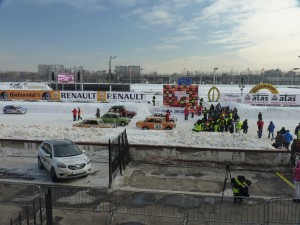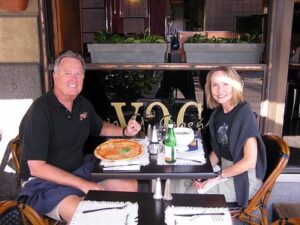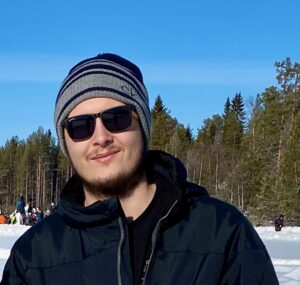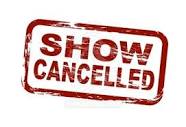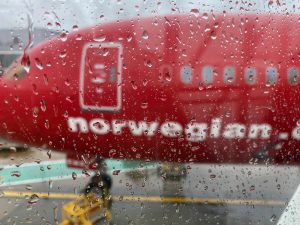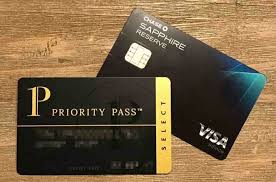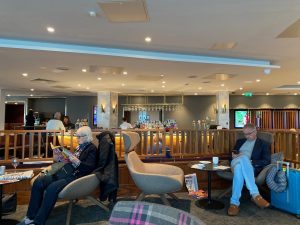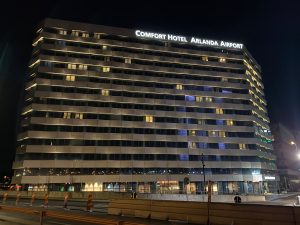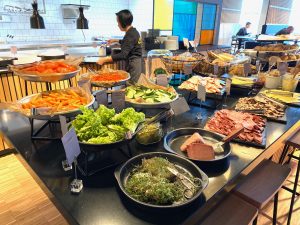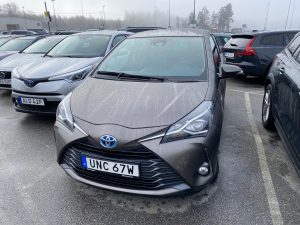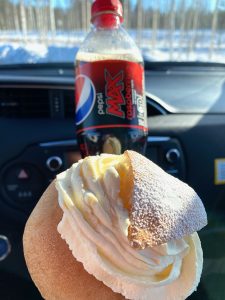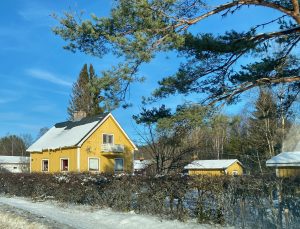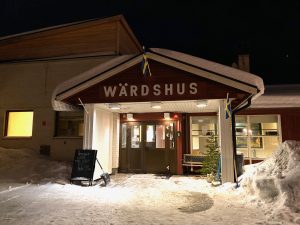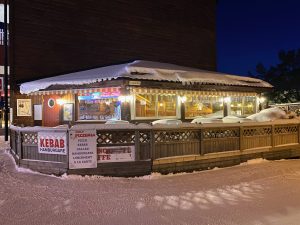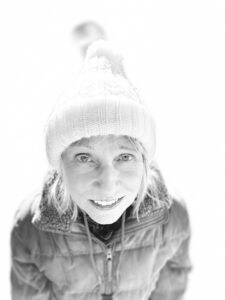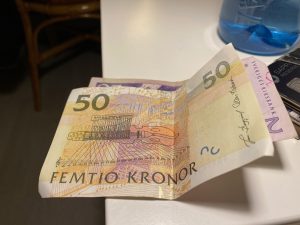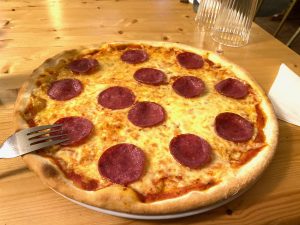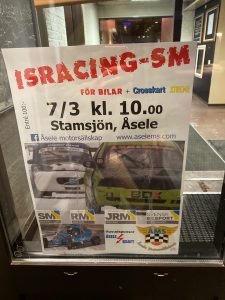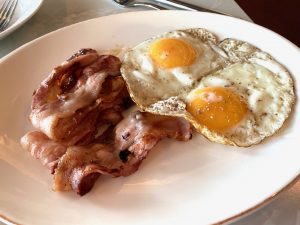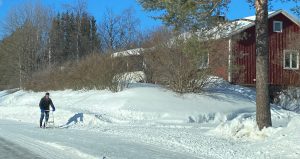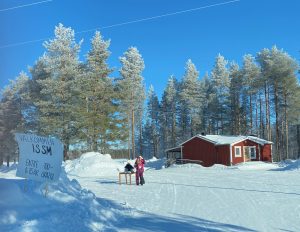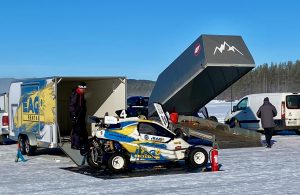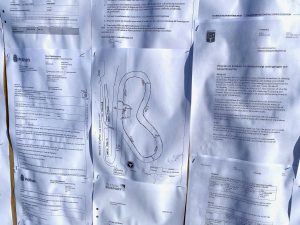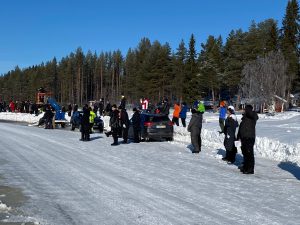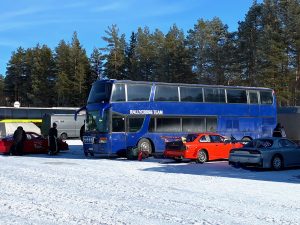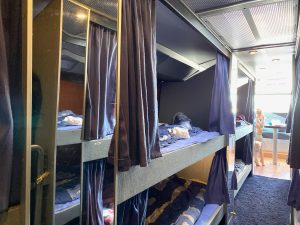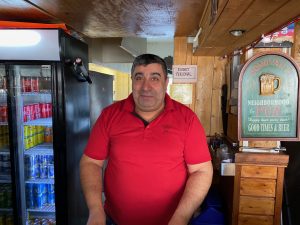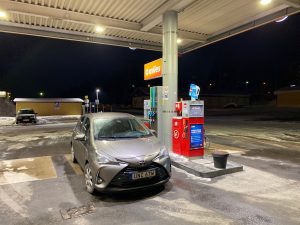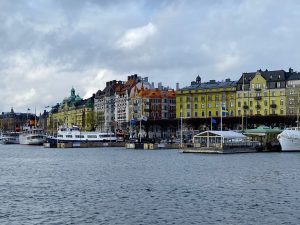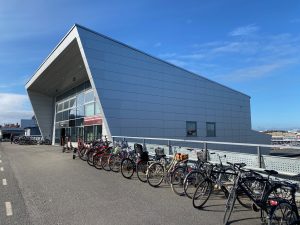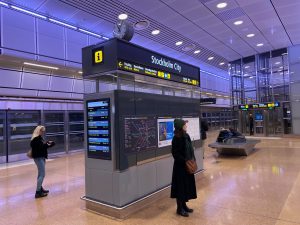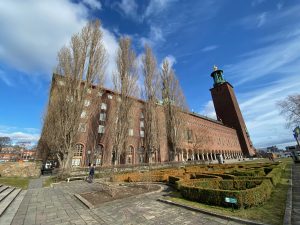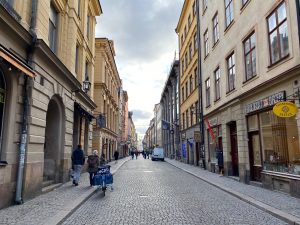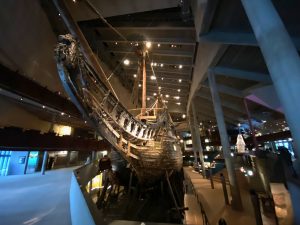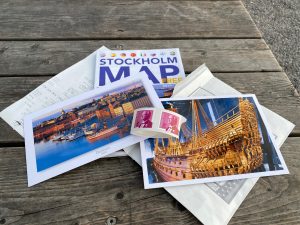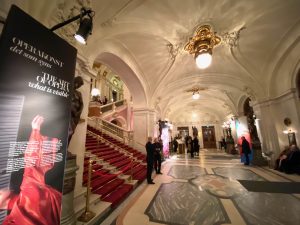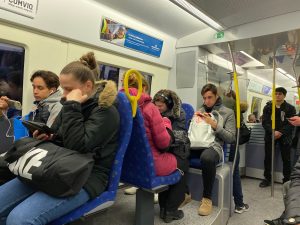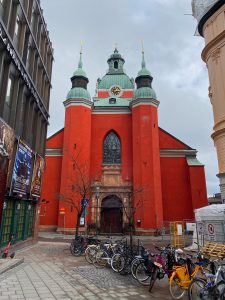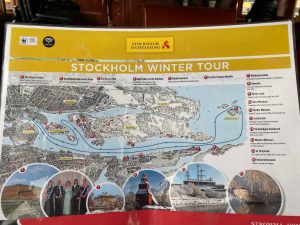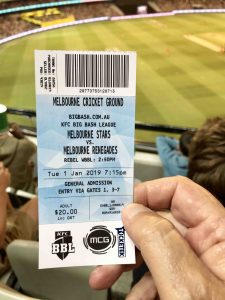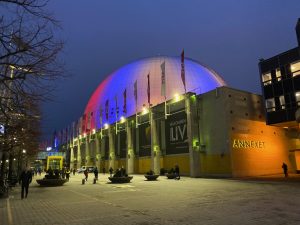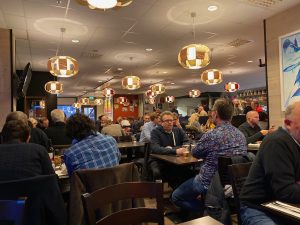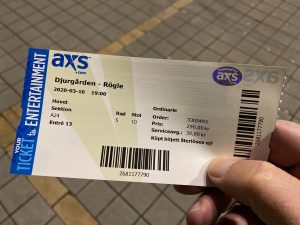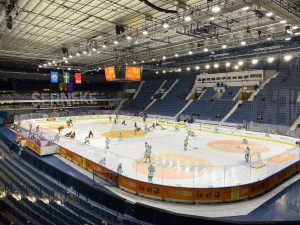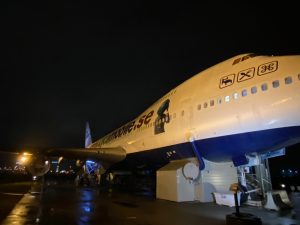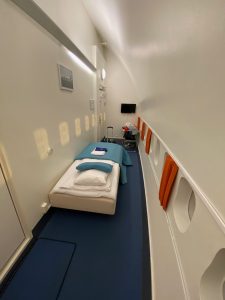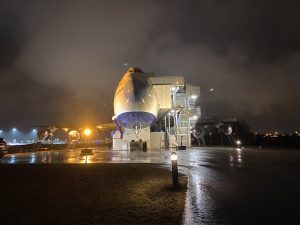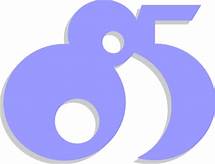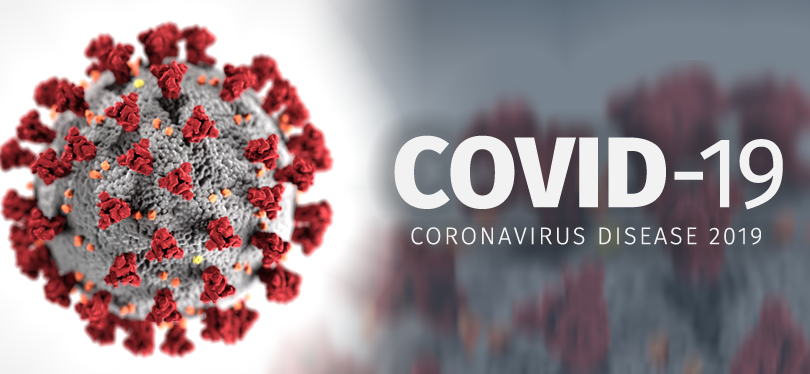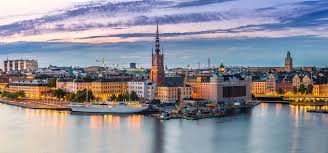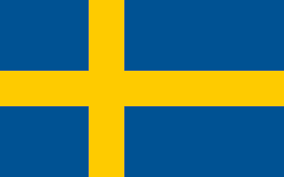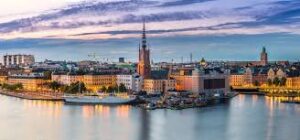
Sweden
.
.
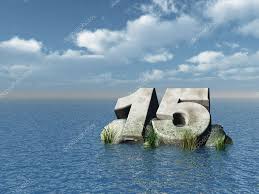
Trackchasing Country #15
Greetings from places on the way to and from Malmo and later Asele, Sweden. Click on the links below to read about the “story” and see the photos and videos from this trip to this northern Scandinavian country where the sun sets early in the winter…Sweden, home to my trackchasing country #15.
The Sweden Experience – 2008! The “How expensive could Europe possibly be” trackchasing tour EDITOR’S NOTE You are about to read about our European trackchasing adventures. As with all RANLAY Racing Trackchaser Reports everything presented as fact is, well, a fact. On the other hand, everything presented as an opinion is in fact MY opinion. As you know opinions are like elbows, almost everyone has one. If you feel that the graphic and straight talk presented below might be so realistic as to take the luster off of a future European visit for yourself…….do not read any further. If my description of European pricing might make you so sick to your stomach that you can’t take it…..do not read any further. However, if you feel comfortable regarding the warnings issued above, sit back and come along on a journey through the “old country”. You may pick up an idea or two for a future journey of your own. At the very least, you will see how one couple runs all over the world and you won’t have to spend a dime of your own money “experiencing” Europe through their eyes. If, on the other hand, you don’t have time to read some 7,000 words right now, you can see the photos taken during Part 1 of the 2008 “How Expensive Could Europe Possibly Be Trackchasing Tour”. Simply click on or paste the following link into your web browser: The complete 2008 Swedish trackchasing tour photo album One more thing. You have likely noted this is a summary of days 5-7 of the trip. Yes, there was “trip” before our adventure in Sweden and afterward. Before we hit Sweden we toured Ireland. Following our trackchasing effort in Sweden, we trackchased in Denmark. You can find those exciting stories under the appropriate tabs at www.randylewis.org. TODAY’S HEADLINES If you were to cross a toll bridge, what do you think a really expensive toll would be?………………more in “Day 7 – Saturday, May 10, 2008” Who can guess what the “Prime Meridian” had to do with our trackchasing in Denmark? …………..details in “Technology Update”. How much do you think a really expensive Diet Coke might cost in Denmark?…………..details in “Day 6 – Friday, May 9, 2008”. AND THE READERS RESPOND From time to time interested readers write to me about one thing or another. Many times, I feel that my other readers would be interested, informed and/or amused by the comments I get. Here’s what an English reader had to say about the expense of Ireland and the upcoming expenses of the Scandinavian countries we would visit: “Randy if you thought Ireland was expensive, you have a big shock when you get to Scandinavia – I went for a burger and chips with two beers each for three in Iceland a couple of years ago and the bill was over $200 US!!! Food and drink in Scandinavia is fearsome on the wallet! Be warned…” A reader from South Dakota had this to say about my first European report. “How can you go to Europe and not give us a “The People” section? I’ll never make it to Europe, I want to know what it’s REALLY like.” Many years ago, I decided to put more effort into trackchasing technology. I don’t know how else to put it. I have the best technical support of any trackchaser in the hobby. What’s the big deal about trackchasing technology? Two items make this such an important feature. First, technology makes the trip go smoother. I don’t get lost. When I don’t get lost, I get to the track on time in a much more refreshed and relaxed manner. Technology costs money…..to begin with. However, and this is the second most important reason to make a strong investment in technology, in the long run, my technology saves me money. Gasoline costs anywhere from 12-14 cents per mile in the U.S. When I’m not lost, I drive fewer miles. When my GPS gives me a routing, it normally reduces the miles I drive. I have anywhere/anytime internet capability. I can be at the most remote racetrack in the country and still be surfing the net to get the best rate on a hotel or whatever. However, it takes constant vigilance to maintain the technology. My staff and I must constantly be on the lookout for that next advance which will keep me ahead of my fellow competitors. For this, I have to thank “the boys back at the shop”. It is rare to watch any race driver during a winner’s circle TV interview who does not give a heartfelt thanks to “the boys back at the shop”. Son J.J. is the lead guy back at the shop. He oversees all of my computer needs as well as handles telecommunications. Son Jim is in charge of logos, licensing and the art department. We’ll soon be offering RANLAY Racing souvenirs at www.randylewis.org. Daughter Kristy is currently on maternity leave from her responsibilities as legal counsel for RANLAY Racing. She is constantly monitoring and gathering data for future liable and slanderous activities so we can have a fun and profitable day in court. The newest member of the RANLAY Racing team is son-in-law James. It was James who saved the day for me on this trip. James is in charge of the GPS department at RANLAY Racing. He researches software and hardware for my GPS program. This lets me find each and every trackchasing location in the most effective and cost-efficient manner possible. In preparation for this trip, I had pre-programmed in all of our race track, hotel and airport locations we were likely to encounter in Ireland, Sweden and Denmark into my GPS unit. In the past, the difficulty of navigating around Europe has limited my trackchasing presence there. With the advent of GPS that will probably change in the future. The first three days of the trip found my GPS unit (aka Dusty) working flawlessly in Ireland. However, when we landed in Copenhagen, Denmark it stopped providing accurate information. I did all I could to figure out the problem. Finally, like any race driver worth his salt, I came over the radio with this, “The GPS unit ain’t workin’. You got to help me. I need more forward bite with the GPS.” Of course, James was ready and willing to lend a hand. Before we left for the Sturup Raceway in Sweden, he came back with this: I just emailed you this in a basic way, but thought it might be helpful to follow up with a little more explanation. I can’t believe I didn’t catch this earlier, but I think the issue is that you have a dash (-) in front of one of your coordinates. When you travelled from Ireland to Denmark, you crossed the Prime Meridian. You are now in an Eastern and Northern location so neither of your coordinates should have a dash (see the note on uploading via Excel below). I finally found another site that gave the coordinates of this hotel and confirmed this. The current coordinates have you out in the Atlantic Ocean a few hundred miles west of the UK. Try removing the dash and uploading again and you should be in business. Let me know how it goes. The basic way…….Microsoft Excel You can also use Microsoft Excel, to create the POI’s. You enter them basically the same way as in Notepad. Open the file and in the “A” cell, enter the longitude. (Remember to use the dash sign for the longitude for Western locations) In the “B” cell enter the latitude,(dash sign for Southern latitude locations) and the POI name (and speed if needed) in the“C” cell. In the “D” cell you can add a comment or enter an address or phone number. Use a new row for each POI. When you save the file, use Save As, and save as type “CSV (Comma delimited)” –James Crossing the Prime Meridian!! Who knew? I don’t think I had heard those words since 7th-grade geography class. I also don’t think there’s a person in trackchasing (O.K. maybe Will White) who could have figured this out. When we crossed the Prime Meridian (that would have been in England), there was no longer a need to make the longitude coordinates begin with a negative sign. Now let’s think about this. Has trackchasing changed since the days of Pappy Hough and Paul Weidman. Paul used to go to local firehouses and ambulance services to ask them where a racetrack might be located. He figured that if there were an accident at the racetrack, those guys would be there! Yes, trackchasing has changed. You don’t have to have the best equipment, but as we see week in and week out, the best-equipped race teams usually win. I’ve got more people “back at the shop” that are more qualified and committed than any other trackchaser I compete with. That’s not an opinion, that would be, well, a fact. I am very thankful and appreciative of their support in this ultra-competitive hobby. Greetings from Malmo, Sweden and surrounding areas. We woke up this morning in Dublin, Ireland. We went to sleep over the next three nights in various places within Denmark. This is what transpired during days 5-7 of our 11-day European adventure. Day 5 – Thursday, May 8, 2008 This morning we had a very early wake-up call. Our flight from Dublin to Copenhagen was scheduled to depart at 6:40 a.m. In order to assure ourselves that we would make that flight our wake-up call came at 3:45 a.m. That meant that after being on the ground in Europe for just days, our wake-up call was coming at 7:45 p.m. California time!!! I don’t know why the two-digit code for Aer Lingus is EI. Sometimes you just gotta do what you gotta do. Aer Lingus has only one flight each day from Dublin to Copenhagen. If we missed that flight, we would have to wait another full day for the next flight. Since we had returned our car the night before, we had a taxi waiting for us at 4:30 a.m. We were staying at the Regency Airport Hotel. One might reasonably expect a hotel with the name “airport” in it to be somewhat close to let’s say…………the airport. We weren’t THAT far from the airport, but the cab fare from the hotel to the airport was still 20 Euros ($32). We arrived at the airport at 4:45 a.m. This seemed awfully early to me. However, we were not alone. The airport was packed. I found an Aer Lingus check-in kiosk. I swiped my passport and the thing worked like a charm. Our boarding passes printed out and then we stood in line for 10-15 minutes to check our bags. Airport security was a breeze. I did not have to take off my shoes but did have to remove my laptop. I forgot to take out my “gels and liquids” bag, but a quick check of my rolling bag by airport security allowed me to pass. We spent a few minutes in the Dublin duty-free shop. There I bought a bright green biking shirt that simply said, “Ireland”. I’m big on getting souvenirs like this to commemorate my visit to some faraway or unique place. This was both. We boarded our jet for the two-hour flight with mostly a group of young people. We had gotten up at 3:45 a.m. and were dragging. The young girls (college age?) sitting in front of us and behind us had more energy than anyone has a right to, especially at that time in the morning. We longed for their parents to come and quiet them down, but alas, we were likely the only parents on the plane. We landed peacefully in Copenhagen at 10 a.m. The weather was again beautiful with temps of about 70 degrees and blue skies. Getting through Danish passport control took all of 15 seconds. We were happy to get another stamp in our passports. It won’t be long now before I will be required to add more pages to my passport to accommodate the places I visit. Folks have told us that Denmark and Sweden will be expensive. Ireland was expensive, how much more expensive than that could these countries be? Plenty! Currently, one U.S. dollar will buy 4.70 Danish Krone. Editor’s note: In 2020 as this report is refreshed one U.S. dollar will buy 6.63 (41% more!) Danish Krone. Neither Denmark nor Sweden uses the European Euro. Carol, who manages our foreign currency needs when we travel, had purchased $200 each of the three currencies we would need for Ireland, Denmark and Sweden. At any point in time, you will see more than 10 foreign currencies sitting around our house. We had not eaten or drunk anything on the airplane. When the flight attendant came around, I ordered an orange juice. He asked if I wanted ice and I told him I did. He placed a cup full of ice on my tray table. Then he said, “One Euro”. Yes, Air Lingus was charging for what most airlines provide for free. Carol informed me that our Euros were safely stored in the overhead storage bin above. The money was too difficult to retrieve easily. With this news, the flight attendant reached over and took back his cup of ice! When we landed, we were now both thirsty and famished. We went to the “baggage reclaim” to get our checked bags. Then we found a second-floor restaurant that served readymade deli sandwiches and fresh pasta. Carol picked out a deli sandwich and a bottle of iced tea. I selected a penne pasta dish made up solely of pasta shells and a spicy tomato sauce. I added a bottle of Diet Coke and a chocolate chip cookie. We had five items: deli sandwich, a plate of pasta, Diet Coke, iced tea and chocolate chip cookie. The total cost of the above was 217 Danish Krones. How much was that in U.S. dollars? A little more than $46! Yep! It was going to be expensive here in the land of my boyhood girlfriend, Heidi. Our rental car would be coming from Hertz. I had made the reservation online via www.sidestep.com. Our six-day rental would cost nearly twice the daily rate of our rental in Dublin. We would be paying about 1,806 Danish Krones or $384 to rent our Danish rental car. Folks, that’s a lot of money to rent a car for six days. To help ease the pain somewhat, our Hertz rep informed us that we were getting a rental car upgrade. Was this out of the kindness of the collective Hertz Rental Car hearts? No, it was not. They didn’t have any mid-size cars available. Therefore, they gave us a brand spanking new Toyota station wagon. The car features a 5-speed manual transmission that shifts like butter. We are the first occupants of the car. Yes, it’s somewhat expensive, although only three days of our rental will be allocated toward my trackchasing budget. We will be trackchasing just three days out of six that we spend in Scandinavia. My corporate days taught me how to allocate budgets in buckets. How often do you get a personal welcome on the hotel room TV? I knew I wasn’t staying at Motel 6. Next stop on our “how to rapidly deplete Randy’s entire retirement account as quickly as possible” tour was at the Marriott Hotel. We would be staying here for two nights. The Marriott rooms go for a bit more than $400 per night and close to $500 per night with tax. I had been checking on this hotel for several days via Priceline.com. Others had won the bidding process for the hotel at $120 per night. I tried for several days to get the hotel for that price but could not. I finally caved in at $180 per night (about $225 per night with all taxes and surcharges). This was a bit more than I like to spend, but I had Carol to entertain and she deserves it. The Marriott Copenhagen is one very deluxe property. When we checked in, I confirmed they had my Marriott Platinum Marquis frequent stay number. I am a lifetime Platinum member of the Marriott program because I spent a lifetime of nights in a Marriott while I was a working stiff. Even when I use Priceline.com to get discounted rates, I still get the benefits of being a platinum Marquis member. This was the view from our 10th-floor room. Those benefits today included a special room located on the “Executive floor” with a full view overlooking the canal that passes by the hotel. We were also given full concierge level privileges, which included complimentary breakfast for two each day (probably a near $50 daily value), Hors d’oeuvres and cocktails each evening as well as free internet. Even in retirement, I continue to reap the rewards of hard work. Not everything was perfect at the Marriott. We did have to pay for hotel parking. At $40 per day, this was very expensive. Overall, the property is a 5-star rated location and should make us very comfortable for the two days we will be here. After that, I suspect we will stay in B&Bs in Sweden and Denmark just to say we did. Day 6 – Friday, May 9, 2008 \ There will be no racing for us today. We have the entire day for touring. We will spend the time in the largest city in Denmark, which is Copenhagen. The concierge at the Marriott hotel had recommended two different city tours. We had the time. We decided to take them both. At 9 a.m., we reported promptly to the base of the Marriott to board a boat for the one-hour canal tour of Copenhagen. Touring the city via boat is very popular. This was a fun and relaxing way to see the city. Again, we were fortunate to have a grand weather day with temps in the low 70s. Our open-air boat had the capacity to handle more than 100 people. The boats are actually called “waterbuses” and carry a very low profile. We saw all of the popular Copenhagen attractions including the Little Mermaid (above), Royal Library (black diamond), the stock exchange and the opera house. We stayed on the boat for the entire one-hour ride. Cost for the tour was a fairly reasonable 120 Dutch Krones (about $25 U.S.) for the two of us. The changing of the guard is a must-see tourist activity. As soon as we finished the canal tour of Denmark, we jumped on a tour bus for a land tour of the city. We saw most of the same things but this time from a slightly different angle. The highlight of our two and one-half hour bus tour was seeing the changing of the guard at the Royal Palace. By the way, this was a wonderful time to visit this part of Europe. The summer tourist crowd has not begun to build up. Following our tour, I wanted to try the somewhat famous Smorrebrod open-faced sandwiches. We went into a local bar/restaurant recommended by our tour guide. I have got to tell you I was disappointed in mine. The sandwich did not have much roast beef and had way too much of a mayonnaise type dressing. This along with a misguided catering stop at Wimpy’s in Ireland were the two most disappointing meals of the trip. Shortly after this photo was taken, the police came and this guy faded into the crowd. We continued our early afternoon touring adventures along the streets of Copenhagen. There wasn’t much for us to buy, so we did some window-shopping. It was interesting to watch some “con men” (above) working the streets with a form of the old “shell game”. They used a white marble and three small matchboxes. The operator would put the marble under one of the boxes, and then slide all three boxes around quickly trying to deceive the player who then had to pick which box had the marble underneath it. There were mainly Eastern European accented men running the game. Had I been born in Eastern Europe, I am nearly certain this would have been my calling in life. It looked to me like they always had a “plant” that, not surprisingly, always seemed to win. Then when the tourist joined the game, the tourist always seemed to lose. Money was flying back and forth until the police came and broke up the game. Proving that we Lewis’ are tourists from way back, we then moved onto Tivoli Gardens, a famous landmark in downtown Copenhagen. This attraction had been recommended to me by more than one person. For some reason, I thought this was a botanical garden. In point of fact, it is an amusement park with a good deal of beautiful flowers all over the grounds. Thiss is sort of an amusement park and horticultural center. Check out the rider on the upper left. Somewhat incredibly, Tivoli Gardens opened on August 15, 1843! This isn’t Disneyland, but it is a nice park for families with small children. By this time, we were starting to tire of touring for the day. Nevertheless, we visited every square inch of the park. We paid 170 DKK (about $36 U.S.) for admission to the park for both of us. This did not include any of the rides. There was a time when we went to Disneyland near our home in California every two months for years. We always had family and friends visiting who wanted to see Disneyland. However, that time has passed for us, but we were glad to see what the famous Tivoli Gardens was like from the inside of the fence. It was now nearing 7 p.m. and we needed food. We left the amusement park, even though they have a wide variety of eateries from which to choose. We settled on a mid-range Italian restaurant called “Vesuvio of Copenhagen”. Here we were able to sit at tables at the sidewalk and eat. We could also watch all of the people living the city life including an extraordinary amount of folks riding bicycles. Despite the expense, we could not have had a better time on this trip. It was at this restaurant that we were reminded that this is indeed one of the most expensive places on earth. We had just four menu items for the two of us. This is what we had and the price in both Danish Krones and U.S. dollars. Carol – Zuppa Di Verdura (large bowl of soup) 93 DKK ($19.78 U.S.) Carol – Italiensk Naturale (bottled water) 36 DKK ($7.66 U.S.) Randy – Pizza Margherita (individual cheese & garlic pizza) 104 DKK ($22.12 U.S.) Randy – ½ liter Coca Cola Zero (Coke Zero!) 49 DKK ($10.42 U.S.) O.K., I had achieved a personal milestone. I had paid more than ten dollars for a Diet Coke!! We went back to the Marriott and had free dessert on the Executive level of the hotel. Before I went to bed, I stayed in touch with the “boys back at the shop” aka James trying to figure out the solution to my malfunctioning GPS unit. Day 7 – Saturday, May 10, 2008 I sometimes feel that my non-trackchasing friends think that all I (we) ever do on these trackchasing trips is watch those “old races”. That is simply not true. Even in the U.S., the time spent at the track probably only averages three hours per track. That leaves plenty of time to see the local sites during the other 21 hours of the day. We were now on day 7 of our 11-day European adventure and still had not seen any racing. That was about to change. We had tracks scheduled for day 7, 8 and 9 of the trip. We were going to first trackchase in Sweden and then in Denmark. Today’s racetrack was just 45 minutes from Denmark. Denmark is a small country, land wise, while Sweden is much larger. The city of Copenhagen is just across the sea from Sweden. In order to get from Copenhagen over to Sweden, we needed to cross the Oresund Bridge. The bridge-tunnel is the longest road and rail bridge in Europe. Construction began on the bridge in 1995 and it was completed in 1999. The bridge is the longest border crossing bridge in the world. It is also a toll bridge. I believe the most expensive toll I have ever paid was to use the Holland Tunnel into New York City. I think that toll is about $6-7. I may also have paid a $10 toll for a road up in Canada. Therefore, you can imagine the shock and chagrin that greeted both Carol and I when we learned what the toll charge was for the Oresund Bridge. Are you ready for this? Cars like ours were charged 260 Danish Krone. That’s $55.31 in U.S. currency. Did that number register with you? I said FIFTY-FIVE DOLLARS AND THIRTY-ONE CENTS!!!!! After a quick call to our mortgage broker to see if we could increase our home equity line of credit, we used our Visa card to pay the toll and moved on. Then I had to listen to Trackchasing’s First Mother explain that this is the product of a socialistic government. Yes, I was getting it from both ends. Next up was our visit to the Sturup Raceway. I’ll tell you more about that in the “Race Review” section. After the race, we had a four-hour drive to get over to Sunday’s track, the Ring Djursland road circuit in Tirstrup, Denmark. We had been in Sweden for only about six hours. As we neared the border, I decided we at least needed to stop and have a meal in Sweden before leaving. Was the Shell team 0 and 24 for the season? No, the Shell station was open 24 hours a day. McDonald’s opened at 6 a.m. and closed at 2 a.m. As luck would have it, we stopped at a Mcdonald’s. I feel very strongly that folks should not do the same things they do at home when they travel internationally on vacation. We can and sometimes do eat at McDonald’s in the United States. I don’t want to waste any of my European meal opportunities at Mickey Ds. I do have one asterisk to this line of thinking. I always like to stop at least once at McDonald’s in a foreign country to see if they have anything that is unique on the menu. That and the fact we needed to have a light lunch of some kind convinced me to pull into a roadside McDonalds. Once inside, we found several unusual and culturally enriching attractions. First, there was a microwave oven available to customers. I’ve never seen that before. Secondly, there were several receptacles for different kinds of recyclable trash items. This looked like a children’s puzzle where you have to put a certain shaped item into an identically shaped opening. I eat the food! We couldn’t miss trying the Chili Cheese Peppers. They were great. Finally, we couldn’t resist trying the chili cheese poppers. This was essentially Jalapeno peppers fried in a pastry with a spicy cheese filling. They were very tasty and four were priced at 10 DKK. From there we had to cross back over the Oresund Bridge to return to Denmark again. Did I tell you they charged us another $55.31? Well, they did! We continued our drive into the interior of Denmark. Just to rub salt into the wound, we encountered yet another bridge where the toll was another forty dollars. We had three bridge crossings today that amounted to right at ONE-HUNDRED FIFTY DOLLARS!! We continued to drive toward Ring Djursland through the beautiful Danish countryside. I think I know what they were doing with all of the bridge toll money. You won’t believe this, but it is true. The Danish government has built a highway rest area about every FIVE miles on all of the major highways throughout the country. I am NOT exaggerating. Some are simple rest areas with toilets and some are full-blown rest stops with gas stations, convenience stores, etc. I told Carol that maybe it was worth paying all of those tolls for the benefit of having a rest area every five miles. Carol is not a “big government person”. She did not agree with this Danish strategy and was not shy in letting me know how she felt. We did stop at one convenience store to buy a special treat for daughter Kristy. Since she reads each Trackchaser Report word for word and has not received her gift yet, I cannot tell you what it was. If someone remembers to ask me next month, I’ll tell you what it was. While we were in the convenience store, I discovered the store was selling DVDs. I lured Carol into a special section where the adult material was. Of course, she was properly embarrassed when the store manager found out she was in there! Please take a look at www.randylewis.org (search the Sweden tab) for photos from days 5-7 of our spring 2008 European tour. I think those pictures will bring these words to life. RACE REVIEW This must be the Sturup Raceway, the location of my 1,334th-lifetime track (Carol’s #359). STURUP RACEWAY, MALMO, SWEDEN Preparation We could never have achieved the European trackchasing results we did during this trip without the help of several trackchasing friends. First, Belgium’s Roland Vanden Eynde (the world leader in trackchasing countries seen) was his always helpful self. I am truly indebted to Roland for all of the information he has given me over the years. Roland recommended an old friend, Morten Alstrup (above) of Denmark, as the most qualified individual in all of Scandinavia for up to date racing information in the region. I will have much more to tell you about Morten in my third and final 2008 Spring European Trackchaser Report that will hit your email box soon. Morten did make some good recommendations on both the timing and best locales for a successful trackchasing effort in both Denmark and Sweden. He gave me the name of Flemming Schliemann, who works with the Sturup Raceway near Malmo, Sweden. I contacted Mr. Schleimann. Unfortunately, he would be with his racing team at another venue during our planned time in Sweden. He gave me the web link of www.mgcc.nu the club that would be racing at the Sturup Raceway while we were in Sweden. I sent a message and soon received a reply from Par-Olaf Hakansson. Meet Par-Olaf Hakansson. He was my primary contact for today’s race information. Par-Olaf (above) was able to give me the exact details so we could visit a track in Sweden. Sweden would be my 15th trackchasing country and Carol’s tenth. We would be heading to the Sturup Raceway. The above may give you just a glimpse of how many levels of communications must be traversed in order to get the information for a successful trackchasing effort. It is doubly (triply?) difficult when the subject of European geography is the topic of discussion. I don’t have enough background to add my own thinking to the information I receive from my track contacts in most foreign countries. Par-Olaf did have an interesting comment when I asked him via email what time the actual wheel-to-wheel racing would begin. He told me they had rented the track from 0900 (9 a.m.) to 1400 (2 p.m.). Of course, he was giving me “European” times. I realize that most of my readers probably did not serve in the military or are not from Europe or other places that use “military” time. For those folks, I have provided the information in “U.S.” time format. From the V.I.P. grandstand, we had a great view of the paddock area. Par-Olaf explained that practice and qualifying would run from 0900 to 1300 or so. Then the very last hour of the event would be devoted to actual racing. He explained, what seemed like unusual scheduling to me, the reasons for so much practice time and so little racing time. He told me that series “points” were actually awarded for the qualifying results. Par-Olaf went on to say the racing was “just for fun”. He said they figured out a long time ago that the actual racing would be a lot less competitive if the real rewards were handed out for something other than the race results. He went on to say that racers were much more likely to be able to take their cars home in one piece with this plan. I’ve never heard of such a thing. However, the plan worked for us. We would be able to see wheel-to-wheel racing which made the circuit trackchasing countable. This method works for the club as well. Everyone was able to drive his or her racecar onto the trailer at day’s end. The Event Later in the day, we would meet this gentleman. His name was Soren Iskov Jensen. During the entire trip, we were blessed with wonderful weather. We had blue skies and a temperature of nearly 80 degrees. We found the track easily, everything was well signposted. Today’s event was a “club” race. Road course circuit tracks often rent out their facilities to local sports car clubs for the day. Many times these events do not carry an admission charge. It was nice to get in for free after we had paid a $55 toll to cross the bridge to get to the track! This is obviously what would be called a purpose-built racing machine. I talked to several individuals at the track today. I will say this about Europeans and really all nationalities that I have encountered in my trackchasing travels up to this point. Everyone treats us as Americans, as travelers and as trackchasers very well. People could not be any more helpful in any way. If we need explanations about local protocol, directions, or anything, the local folks are willing to help. Fortunately, for us, the Scandinavian folks are fluent in English. I couldn’t even decipher a single word when I overheard people speaking in Swedish or Danish. I frequently criticize circuit (road course) racing for not providing much viewing opportunity for spectators. To be clear, I am not really criticizing circuit racing I am critical of ANY track where I can’t see all or at least most of the racing action from one vantage point. This is the first race of the day. They started from a standing start. I am pleased to say that the Sturup Raceway was outstanding in this critical area (for Carol and me anyway) of spectator viewing. In one (of the three) grandstands we could see 95% of the 1.75 KM track. The road circuit featured a number of hairpin turns and several elevation changes. At one point, we could see cars directly in front of us racing on three different straight-aways on three different elevations. I strongly recommend you visit www.randylewis.org to see the photos of the Sturup Raceway. The pictures will do a much better job of showing you what the track and its surroundings looked like than I can in written words. You also won’t want to miss the very unique racecars that showed up today. Someone told me the club rented the track for about $6,000. I’m assuming that would be a “turn-key” rental including safety personnel, restroom usage, electric and whatever. I’m guessing there were about 40 racecars here today. There may have been a few more. That means that the rental fee when spread over the number of competitors would come out to about $150. That’s not a bad price for probably 30-60 minutes of practice laps and 10 laps of racing. We rooted on Par-Olaf Hakansson in the #68 during his race. As is the case at most club run events like this there was no P.A. system or announcer to tell us what was going on. We were able to consult a bulletin board that provided driver names, qualifying times, car makes etc. Concessions were somewhat limited. They were provided by the track safety people. The refreshments mainly consisted of soft drinks, candy and sausage sandwiches. Of course, we had to have a Swedish sausage sandwich. We parked the Hertz Rental Car Racing Toyota right in the middle of the paddock area. From there we were able to walk around the entire paddock examining and taking pictures of our favorite cars. The ability to enter the pit area and get up close to the racing machines is one of my favorite aspects of circuit racing. I wanted to meet Par-Olaf Hakansson, the racer who had provided me the advanced information. As we went around the paddock, I looked for his name to be painted on one of the racecars. No luck. There was no Par-Olaf. Finally, we found the track bulletin board. There was Par-Olaf’s name! He was driving car #68 a dark green MG. We walked over to his pit area and introduced ourselves. He seemed as happy to see us as we were to meet him. He told us the club has about four events a year, mostly at the Sturup Raceway, but also at one other track. When Par-Olaf is not racing, he’s a software writer for Ericson cell phones in Sweden. His wife has to travel over the bridge that we paid $55 to cross every day for her work in Copenhagen. I suspect if Par-Olaf could convince his wife to take a job in Sweden, he could use that toll bridge money for an even bigger engine in his racecar! It was fun meeting this gentleman. I really appreciated the information he gave us about today’s event. One of the best viewing spots was atop the steward’s building near the start/finish line. Carol and I ascended to the top of this area to watch the first race of the day. It was here that we met Soren Iskov Jensen. Mr. Jensen was a friendly fellow, who greeted us warmly. He would be driving a 1968 TVR automobile in a later race today. I will be the first to admit that I do not know my European automobile brands. I don’t know a TVR from a VCR. I did learn that a TVR is a hand-built machine out of Great Britain. It is quite beautiful. Mr. Jensen sells big boats for a living and collects race cars for his passion. He had just purchased the TVR and was just getting used to it. Stop by www.randylewis.org to see this car and many others that raced today. The club racing was very efficient. In circuit racing, there are rarely any full course yellow flag periods. They simply have “corner” yellows. This alerts the drivers that there is a problem on the track that is localized. I like this aspect of road racing. We found this stash of go-karts in a secret location on the property. During the day Carol and I snuck into the drivers/media lounge. This was a large building that offered a dining and bar area. There was also a large selection of racing karts, helmets and uniforms. I suspect the track derives a large amount of its revenue from on-track driving classes and clinics. There were about seven of these cars racing today. One of the on-track attractions was the classic European open-wheeled midget class. They brought about seven of them today. I noticed a decal on one of the cars that told these midget racers dated back to the 1950s. They along with all of the other cars put on a good one hour’s worth of racing. The races all began with the cars positioned on the grid for a standing start. I believe all races were 10 laps in length. As I’ve mentioned, we could see virtually the entire track under perfect weather conditions. I want to thank all members of the MG club including Par-Olaf and Soren in particular for making our day so enjoyable. RENTAL CAR UPDATE Copenhagen, Denmark – Thursday-Wednesday I’ll be driving the Hertz Rental Car Racing Toyota for our six days in Denmark/Sweden. The car is brand new. We are the first customers to use it. The car had a five-speed transmission. I’ll be honest. Sometimes I simply went from second gear directly into fifth gear. Nobody seemed to mind. Thanks for reading about my trackchasing, Randy Lewis Alberta’s #1 Trackchaser I live in my own world. People know me here. TRAVEL DETAILS AIRPLANE Los Angeles, CA – Dublin, Ireland – 10,340 miles RENTAL CAR Dublin International Airport – trip begins Drove all over Ireland Dublin International Airport – 594 miles AIRPLANE Dublin, Ireland – Copenhagen, Denmark – 1,540 miles Copenhagen International Airport – trip begins Malmo, Sweden – 81 miles TRACK ADMISSION PRICES: Sturup Raceway – Free RANKINGS LIFETIME TRACKCHASER STANDINGS UPDATE: There are no trackchasers currently within 100 tracks of my lifetime total. I’m telling you, it’s not my fault! Other notables These worldwide trackchasers are within 10 tracks (plus or minus or more) of Carol’s current trackchaser total. 2008 TRACKCHASER STANDINGS Tracks have been reported by 28 different worldwide trackchasers this season. LIFETIME COUPLES TRACKCHASING STANDINGS LIFETIME NATIONAL GEOGRAPHIC DIVERSITY STANDINGS 2007 NGD results are posted at www.randylewis.org 1,299. Barnes Lake Ice Track, Ashcroft (road course), British Columbia, Canada – January 13 1,300. Bira Circuit, Pattaya (road course), Thailand – January 19 1,301. Cameron Lake Ice Track (oval), Erskine, Minnesota – January 26 1,302. Birch Lake Ice Track (oval), Hackensack, Minnesota – January 27 1,303. Mille Lacs Lake Ice Track (road course), Garrison, Minnesota – January 27 1,304. Mille Lacs Lake Ice Track (oval), Garrison, Minnesota – January 27 1,305. Ozark Empire Fairgrounds (oval), Springfield, Missouri – February 1 1,306. Atlanta Motor Speedway (road course), Hampton, Georgia – February 2 1,307. Brainerd International Raceway Ice Track (road course), Brainerd, Minnesota – February 3 1,308. Bay of Green Bay Ice Track (road course), Marinette, Wisconsin – February 9 1,309. Lake Speed Ice Track (oval), Tilleda, Wisconsin – February 9 1,310. Shawano Lake Ice Track – North Shore (oval), Shawano, Wisconsin – February 10 1,311. Cecil Bay Iceway (oval) – Cecil, Wisconsin – February 10 1,312. Mototown USA (oval) – Windsor, Connecticut – February 15 1,313. Moosehead Lake Ice Track (oval) – Greenville Junction, Maine – February 16 1,314. Clarence Creek Ice Track (oval) – Clarence Creek, Ontario, Canada – February 17 1,315. Durban Grand Prix (road course), KwaZulu-Natal, South Africa – February 24 1,316. Lake La Biche Ice Track (road course), Lake La Biche, Alberta, Canada – March 1 1,317. Rice Lake Ice Track (oval), Rice Lake, Wisconsin – March 8 1,318. Ashland Ice Track (oval), Ashland, Wisconsin – March 9 1,319. Autodromo Hermanos Rodriquez (road course), Mexico City, Mexico – March 16 1,320. Hartwell Motor Speedway (oval), Hartwell, Georgia – March 22 1,321. Lavonia Speedway, Lavonia (oval), Georgia – March 22 1,322. Dover Raceway (road course), Brown’s Town, St. Ann, Jamaica – March 24 1,323. Lake Country Speedway (oval), Ardmore, Oklahoma – March 29 1,324. Swainsboro Raceway (oval), Swainsboro, Georgia – April 3 1,325. Screven Motor (oval), Sylvania, Georgia – April 4 1,326. Centerville Super Speedway (oval), Centerville, Arkansas – April 5 1,327. Central Arkansas Speedway (oval), Plumerville, Arkansas – April 5 1,328. Clinton Country Speedway (oval), Alpha, Kentucky – April 6 1,329. Pleasant Valley Raceway (oval), Boise, Idaho – April 20 1,330. Bremerton Raceway (road course), Bremerton, Washington – April 26 1,331. Port Angeles Speedway (oval), Port Angeles, Washington – April 26 1,332. Evergreen Speedway (1/5-mile oval), Monroe, Washington – April 27 1,333. Virginia Motor Speedway (oval), Jamaica, Virginia – May 1 1,334. Natural Bridge Speedway (oval), Natural Bridge, Virginia – May 2 1,335. Sturup Raceway, Malmo, Sweden (road course) – May 10 THE COUNTRY LIST #15!! RLR – Randy Lewis Racing Lifetime Trackchasing Countries # 1 – UNITED STATES OF AMERICA – Peoria Speedway – Mt. Hawley, (oval) – Track #1, Peoria, Illinois – circa 1954 (age 5) # 2 – CANADA– Cayuga Speedway (oval) – Track #174, Nelles Corner, Ontario – July 31, 1988 (Dick Trickle winner) # 3 – AUSTRALIA– Parramatta City Raceway (oval) – Track #180, Granville, New South Wales – November 17, 1989 (accompanied by Carol) # 4 – UNITED KINGDOM – Northhampton International Raceway (oval) – Track #378, Northhampton – June 26, 1999 (accompanied by Carol, Kristy, Jim) # 5 – NETHERLANDS– Driesum Racetrack (oval) – Track #839, Driesum – May 5, 2005 (accompanied by Roland Vanden Eynde) # 6 – BELGIUM– Bellekouter oval (oval) – Track #841, Affligem – May 8, 2005 (accompanied by Roland Vanden Eynde) # 7 – FRANCE– Circuit de Croix en Ternois (road course) – Track #843, Saint-Pol sur-Ternoise – May 8, 2005 (accompanied by Roland Vanden Eynde – 2ndnew country in one day!) # 8 – GERMANY– Nurburgring (road course) – Track #844, Nurburg – May 13, 2005 (accompanied by Carol, Roland Vanden Eynde) # 9 – NEW ZEALAND – Western Springs Speedway (oval) – Track #1,134, Western Springs – December 26, 2006 (accompanied by Carol) # 10 – MEXICO – Triovalo Bernardo Obregon (oval) – Track #1,281, Tiajamulco de Zuniga, Jalisco – October 14, 2007 (accompanied by Carol, J.J., Roger Ward) # 11 – BARBADOS – Bushy Park Racing Circuit (road course) – Track #1,296, Bushy Park – December 9, 2007 # 12 – THAILAND – Bira Circuit (road course) – Track #1,300, Pattaya – January 19, 2008 # 13 – SOUTH AFRICA – Durban Grand Prix (road course) – Track #1,315, Durban, KwaZulu-Natal – February 24, 2008 (accompanied by J.J. and Will Van Horne) # 14 – JAMAICA – Dover Raceway (road course) – Track #1,322, Brown’s Town St. Ann – March 24, 2008 # 15 – SWEDEN – Sturup Raceway (road course) – Track #1,335, Malmo – May 10, 2008 (accompanied by Carol) Are there any more foreign travel itineraries on the horizon? I can’t really promise and I’ve learned that even trying to predict the trackchasing future is impossible. My best advice? Stay tuned. Editor’s note: The COVID-19 pandemic is generally considered to have begun in the United States on March 11, 2020. I came back to Los Angeles from Stockholm, Sweden on the evening of March 11, 2020. I returned to find my flight was the last plane allowed into LAX before coronavirus international travel lockdowns were put in place. The following describes how “Sweden went down” as they prepared to fight the virus using the herd immunity approach. Why would I choose Sweden during the winter for a weeklong trackchasing trip? There are three easy answers to that question that come to mind. One of my goals for the 2020 trackchasing season is to make, “big” trips. Why am I putting a focus on big trips this year? I have already seen racing at almost all permanent oval and road course racetracks in North America. In my opinion, the very best racing comes from these kinds of tracks. That means that the remaining tracks left for me to see in North America won’t be presenting the best racing. Carol and I travel the world, and our visit to Sweden, although all too brief, was outstanding. Thanks to Par-Olof and his friends for thinking of us. This would not be my first trip to Sweden. All the way back in 2008 Carol and I went to both Sweden and Denmark to see some racing and tour this beautiful albeit expensive part of the world. During that trip a decade ago to Sweden we left Copenhagen, Denmark headed for Malmo, Sweden. What I remember most about that adventure was that we paid $55 to drive across the Oresund Bridge which connects Malmo and Copenhagen. At the time the Oresund Bridge was the longest combined road and rail bridge in Europe. We saw some less than super exciting SCCA type racing on a flat road course in Sweden. We were only in Sweden for a matter of hours. After the race, we took that same bridge back to Denmark. Later in the day, we crossed another toll bridge. We ended up spending some $150 U.S. crossing those three bridges! Fast forward to 2020. Spending a week in Sweden would definitely qualify as a big trip. I had already been trackchasing during the first couple of months of 2020 in France, Italy, Algeria and Mexico as well as Canada. I was off to a pretty quick start with the big trip idea! Secondly, I enjoy expanding my reach in some of the major categories of the trackchasing hobby. Ice racing is one of those major categories. I established a goal of adding another country, state or province to my list of where I have seen racing on ice by the end of 2020. I already met that goal when Carol and I saw ice racing up in the French and Italian Alps…in both France and Italy during January. As you will come to find out I was able to add Sweden (above) to my ice trackchasing list. Here’s the complete list which now includes Sweden. This comes to 23 countries, states and provinces where I have ventured out in the middle of the winter for a little bit of ice racing fun. I think the next leading trackchaser is this important category totals about six or seven. Belarus British Columbia, Canada Soon I was having a great time with these two Russian lassies. Finland France Iowa Maine Manitoba, Canada Massachusetts Michigan Minnesota New Hampshire New York Ontario, Canada Quebec, Canada Racing…Russian style. Russia Saskatchewan, Canada Sweden Vermont Wisconsin Thirdly I wanted to give Sweden just a little bit more attention than I was able to give it during my first trackchasing trip to the country. Would you like to read about that trip back in 2008? If so here’s a link to that story. Sweden and the “First Visit – 2008” Readers should know that a “trackchasing” trip to a foreign country for me is really like a touring trip would be for anyone else. Normally, the trip will last 5-10 days with one afternoon devoted to racing. The rest of the trip is reserved for seeing the sights, eating the food and observing the culture. For this trip, I was initially shooting for an ice race in Austria. However, that plan got tied up in trackchasing logistical rules minutia. That situation made Austria less of a target. I switched to Sweden. I needed to check several sources of information about Swedish ice racing before I hit the jackpot. I made contact with a man named Simon Tiger. Over the course of the past few months, he and I had messaged back-and-forth more than 50 times. Without him, my Swedish ice racing trip would have been much more challenging. In case this isn’t crystal clear my trips would be much less robust without the help of local people like Simon Tiger. I find it amazing that I always seem to end up finding a local person and sometimes more than one who can educate me about the local racing culture in their country. Often times I will maintain a friendship with these people for years. I’ve probably been able to make those friendships in 30-40 countries. This allows me to stay in touch with them normally via social media. I even have one friend who I’ve trackchased with all over Europe. He calls me each Christmas to wish me a happy holiday. Boris is originally from Bosnia and Herzegovina. I picked this weekend to come to Sweden for one special reason. The Sweden ice racing schedule called for racing on both Saturday and Sunday at two different ice racing venues. I had monitored the Swedish weather closely over the past six weeks. It looked as if the temperatures were going to be ideal for ice racing. It seemed as if there would be enough cold-weather to create good ice but not so cold as to make ice trackchasing viewing uncomfortable. This was why I was a little surprised when Simon messaged me saying that one of the two ice racing opportunities had canceled. They actually canceled about two weeks ahead of their race date. At the end that didn’t matter. I was able to keep the trip to Sweden and see an ice race that met all of the objectives listed above. Now…without further ado….let’s go to Sweden! Wednesday, March 4, 2020 Yesterday, Carol and I landed in the Tijuana, Mexico airport after spending a quick four days down in Yucatan, Mexico. That was a fun trip. We were able to use the new “tunnel” that connects the U.S. and Tijuanna, Mexico. Mexico is actually a safe enough place to visit in most of the country’s locations. Now it was time for me to head to Stockholm, Sweden. We’ve been using the budget long-haul airline carrier, Norwegian Airlines for our past several trips to Europe. I always fly coach on these long trips unless I am upgraded for free. I would say that I have been upgraded when flying standby more than 50% of the time over the past decade. That probably includes 60-80 international trips. For this trip, I was paying cash….like most people do. I prefer coach class on these trips at $445 per person, which is what I paid for this round-trip ticket to Stockholm. What would business class cost on a trip like this? I’m guessing $2,000-3,000 per person. I would much rather sit in a coach seat for 10 hours and have that $2,500 in my back pocket when I land than pay for business class. Many of my friends feel differently about this choice. Of course, most folks don’t make 6-8 or more of these trips each year. My main credit card is the Chase Sapphire Reserve Visa card. It comes with a special feature. That benefit is something called Priority Pass. Being a member of PP allows me to use airline clubs and airport restaurants, some 1,400 in total all over the world. Not only do I get to USE these places but there is no charge for me to use them. That’s a pretty good deal. Today I began my trip at the Los Angeles International Airport (LAX) with a stop at the Korean Airlines Lounge located in the international terminal. This is one of the most upscale lounges I visit anywhere in the world. All food and drink are complimentary. Priority Pass makes traveling so much more relaxing. My Norwegian flight would take me from LAX to London’s Gatwick airport before connecting to a flight departing for Stockholm’s Arlanda airport. I had about a four-hour layover in Gatwick. That was perfect. First, I headed to the “No1 Lounge” in the Gatwick’s south terminal. There I flashed my electronic Priority Pass card and enjoyed a continental breakfast in a most upscale and relaxing atmosphere. I can’t tell you what a value these lounges are especially after a long overnight flight. After spending a couple of hours in this lounge I sauntered over to the Grain Store Café and Bar, another Priority Pass option at Gatwick. There I dined on one of their gourmet burgers and fries. Next up was the relatively quick three-hour, twenty-minute flight from London to Stockholm. When I landed at 8:20 p.m. I had been traveling for nearly 24 hours. Arlanda airport is connected to a fairly large shopping mall. I would be needing a rental car but I would not be needing a rental car tonight. That being the case I had reserved a room at the Comfort Hotel at the Arlanda airport. This was one of my better logistical ideas for this trip. The hotel might have been an eight-minute walk, mostly indoors from the airport itself. The Comfort Hotel would match most Marriott hotels in quality. Additionally, bypassing the rental car counter tonight would save me a day’s rental car expense. My travel plan up to this point was working perfectly. God natt från Stockholm. Friday, March 6, 2020 As you will come to find out I was in Sweden, mainly Stockholm, for eight days. The first couple of days of the trip would be used to see an ice race in the northern part of the country. The remainder of this visit would have me exploring every corner and crevice of Stockholm, Sweden. I invite you to ride along as my sidekick on this trip. Today’s hotel buffet breakfast was over the top. If I ever come back to Stockholm and need a hotel near the airport I will once again stay at the Comfort Hotel. The next item on today’s agenda was to pick up my rental car. I had made a reservation for a manual transmission economy-sized rental car with Hertz. In the U.S. I only rent full-sized cars. However, internationally, I will reserve an economy rental car for two reasons. First, in most foreign countries there is very little size difference between the smallest rental cars and the biggest. Secondly, it is very common for rental car companies to upgrade me by a class or more at no extra charge. I had spent a lot of time in advance of the trip trying to confirm I could get a rental car with all-weather (snow) tires or maybe snow chains. I wasn’t able to confirm either. I just hoped here in early March in Sweden that I wouldn’t need those options. During my trip, the further north I went, there was plenty of snow on the ground but it never snowed where I was. Hertz gave me a good-sized Toyota Yaris hybrid automobile with an automatic transmission at no extra charge. That would work just fine. I am very comfortable driving a manual transmission but an automatic is much more convenient. I was renting my car for five full days. I do a lot of driving with my trackchasing/travel hobby. Gas station convenience stores are a frequent stop for me on these trips. They supply bathrooms (called “toilets” in Europe) and snack time food and drink. Today I picked up a Pepsi Max Rasberry flavored diet drink and a cream puff. I am a conflicted although very happy consumer of food and drink. Off I went on the 369-mile one-way drive to the small town of Asele, Sweden. Asele was where the ice racing would take place. Asele was a small town of just 1,798 residents in the province of Lapland. This seven-hour drive was done in the daylight for about half of the drive and in the dark for the last half of the drive. I had plenty of time to get there so I just enjoyed the scenery. For the first 15 years of my life, I lived in a yellow house. I am still partial to yellow houses. So are people in Sweden! I couldn’t believe how many yellow houses there were here. I’m going to guess that about one out of three homes was painted in one form of yellow or another. You’ll see a lot of those yellow houses in my SmugMug photo album. My trusty Waze GPS system was getting me everywhere I needed to go in Sweden. Of course, it was powered by my iPhone 11 and my AT&T cellular system. Our AT&T plan allows me to use my phone pretty much as I do at home in more than 100 countries. I remember the days when my phone couldn’t work in virtually any way on these foreign trips. Having a fully working cellphone makes the trip about a MILLION times easier. Tonight I found my hotel, the Asele Wardshus with no problem whatsoever despite arriving in the dark. This was a small place with less than twenty rooms. I booked it online with Expedia for less than $100 U.S. It was dinner time and I asked the hotel owner for a local restaurant recommendation. He came up with a local Ma and Pa pub and pizza establishment in town. I had a pepperoni pizza along with a Norrlands Guld beer. I was told this was a local Swedish beer. The beer was better than the pizza. I gotta tell you it is beyond cool to walk into a little tavern in a small town in a foreign country on a snowy winter evening. I don’t do that in the U.S. Maybe that’s why I so much appreciated the opportunity here in Asele, Sweden. When it was time to pay the bill I had a little bit of a problem. European retail establishments often require a pin code in order to use a credit card. I didn’t have a pin for my credit card. No problem. I simply reached into my pocket to pay with some of the Swedish kroner that Carol had given me as I left for this trip. Permit me to divert the conversation for a paragraph or two. Some might be asking themselves why I hadn’t brought Carol along on my trip to Sweden. Don’t most couples travel together on major trips like this? Yes, I would think that most couples do travel together on trips like this….if they take a couple of vacations like this a year. I travel overnight on trips like this and all over the United States some 175-200 nights each year. Carol will travel with me overnight about 80 nights a year. So…Carol doesn’t come along on each trip but she does travel more than just about anybody we both know. In January she and I spent a couple of weeks in France and Italy. Just one day before I left for Sweden Carol and I returned from several days in the Mexican state of Yucatan. I hope that answers any questions folks might have about, “Where was Carol”? Carol always saves a “local stash” of currencies from countries we have visited in the past. I don’t know where she keeps these currencies. I don’t know how much we have tied up in these monies. I suspect it might be quite a lot. When I asked her in advance of leaving on this trip if she had any kroner she told me she did. Then in just a few minutes, about $110 worth of Swedish kroner was placed on my desk in a plastic sandwich bag. I know…it’s sounds sort of mafia-like doesn’t it. However, tonight when I went to pay the proprietor with the Carol-supplied kroner he looked at the bills as if they were monopoly money. He went on to tell me in broken English that a few years ago this Swedish currency had been replaced with a new paper kroner. He couldn’t accept what I was offering. My bill was 155 kroner for the beer and pizza. That’s a little bit less than $20 U.S. I had already struck out with my credit cards and what I thought were Swedish kroner. What could I do now? The restaurant owner suggested I use an ATM that was conveniently located outside. However, I really didn’t want to incur a five-dollar charge to use a foreign ATM. I told him I could pay him in euros or U.S. dollars. Then I remembered that both my euros and dollars were back in my hotel room. I really didn’t want to return to my hotel for the currency tonight and then drive back to the restaurant to pay the bill. He simply looked at me and said again in broken English, “tomorrow, tomorrow”. That would work for me. I hoped in the meantime that I could exchange some euros or dollars for Swedish kroner to pay my bill. Saturday, March 7, 2020 Today’s ice racing location in Asele, Sweden was a seven-hour drive north of Stockholm, the capital city of the country. I had pulled in late last night to the Asele Wardshus hotel in Asele. My plan for finding the ice track this morning was to follow the signs or ask local people about the exact location of the ice racing course. I was more than pleased to see a poster advertising the ice racing in the window of my hotel. Racing was scheduled to begin this morning at 10 a.m. When I entered the parking lot at the hotel last night it was snowing. The hotel’s parking area was full of cars some with attached trailers. This morning when I sauntered over toward the breakfast room at 8:30 a.m. the parking lot was virtually empty. I guessed all of those cars that I saw last night were racers and they were now at the ice track. Including breakfast in the hotel room rate has always been a European thing. Many American hotels have joined in with this idea. This morning‘s breakfast was excellent. The staff at the Asele Wardshus Hotel could not have been any better. Today was race day! I had a few minutes before the ice races were to begin. I needed to track down a currency exchange. The hotel provider couldn’t help me. He didn’t have enough cash on hand. However, he recommended I head down to the gas station which also featured a post office. He figured I could exchange some money there. He was right. The man managing the gas station, which was located right across the street from the pub, told me that he could exchange some money but his exchange rate wasn’t the best. No problem. I had a financial obligation to the pizza owner. If I needed to eat a little bit of a discount with the currency exchange it was on me. Soon I was walking out of the station with about 300 Swedish kroner. The pub had not yet opened on this Saturday morning. The doors were locked. All I could do was make a mental note that I would return when the races were over and pay my debt. I tried to follow the signs directing me to the ice track. Of course, they were written in Swedish as you might imagine. It was interesting to see so many local townspeople out and about on a cold, crisp late winter morning. The temperature was 8 degrees Fahrenheit. Folks used what looked like a combination walker/ski to get around. I was more than pleased to have found the race parking area. There I encountered two young women selling tickets to the event. For 100 Swedish krone or about $12 U.S. I gained admission to the races. I would have full paddock access. I was also given a racing program that listed each race driver by name and car number. The weather today was perfect for ice racing. It was cold with temperatures at about 20°F. However there was absolutely no wind, the skies were blue and the sun was shining. This was good ice racing weather for spectators. There were some 20-25 cars in the paddock. This represented four classes of passenger style cars and one group of cross karts. American fans might know cross karts are something similar to a dune buggy. Again, as you might imagine all of the signs and commentary from the the track announcer were done in Swedish. I could make a little sense of some of the signs and some of the scheduling paperwork simply because of my experience of being at so many tracks. With regard to the announcer, I had absolutely no idea what he was talking about. Nevertheless, when he took a breath I walked up and introduced myself. I told him I had come all the way from California to see Swedish ice racing. Then I handed him my card and wished him a great day. As I walked away I could hear him chattering into the microphone and mentioning a Californian a few times to the crowd! You probably know that all true ice racing is done on a flat track. Why would that be? Water seeks its own level. Occasionally plowed snow will be used to both create safety barriers as well as minorly banked turns. From the hand-drawn map of the track that I found in the paddock area today’s track looked somewhat like an oval. The configuration came with a large chicane and then turns on the backstretch. The cars raced clockwise. By definition, they were racing on a road course configuration. I’m guessing the track’s distance might have been nearly a mile in length. Most of the spectating crowd lined up along the front straight. However, there was a good distance, probably 400-500 meters, from the spectators to where the cars actually left the starting line. The racers began from a standing start at the drop of the green flag. I’m going to recommend, as I always do, that you take a look at my photo album and YouTube video. If you do you’ll get a better sense of what today’s racing machines looked like and how they performed on the ice. I always do my best to offer those two options for the folks who follow my hobby. It takes a bit more time to manage the photos and video but if you find what I share entertaining and informative then it’s worth it. Maybe after seeing how they do things in a faraway place like Sweden you might decide to come over here to see for yourself. After I had watched a few races I went about with the task of finding Mr. Simon Tiger. He and I had messaged each other at the track so we both know that each of us was in the ice house. Finding Simon could have been tough. This was a huge lake. Spectators and racing people were spread all over the frozen lake. Luckily for the both of us, we were each standing within 10 feet of one another while watching the last race! I asked a gentleman wearing a “Tiger X” T-shirt if he was Simon. No, he told me he wasn’t but the tall young gentleman standing just seven feet away from me was! It’s a small world. From there Simon and I spent the better part of a half-hour chatting about Swedish Ice Racing. I’m 6‘3“ tall. I’m going to guess that Simon was an inch taller than me. Today I was the “little guy” despite topping out at 97.5% on the scale of tallness. Simon was watching the races today with his sister and her kids. I would come to learn that the Tiger family racing team is a real family unit. Simon does not ice race. He does race in the rally car championships all over Sweden during the summertime. As a matter of fact, this past summer he was the Sweden national champion with the two-wheel-drive cars. That’s impressive. He began to tell me about the racing venues that are used for rallycross in the warmer months. Today’s ice racing was already six hours north of Stockholm. Simon told me that several of the rallycross races were another six hours north of where we were today. Folks, that’s getting all most all the way up to Antarctica! I had not planned my summer trackchasing schedule just yet. Some people don’t realize, except for foreign country travel, that I rarely plan an outing more than 5-7 days in advance of a trip. After talking to Simon today it wouldn’t be a shocking outcome to see me return to Sweden this summer. As Simon and I talked I learned that the Tiger family had been in the racing business for a long time. Simon’s dad was the patriarch of the Tiger racing dynasty. Simon showed me some photos of the car he built over the winter. He estimated that it took him 2000 hours to build the car from scratch. He’s a welder and a fabricator and can pretty much do it all. He told me that racing was expensive in Sweden. The engine in his car cost about $30,000 U.S. Tires were about $350 U.S. apiece. Simon told me that he had several sponsors who contributed and really helped the race team. They don’t race for much prize money in Sweden so sponsors are absolutely required. From there Simon showed me the Tiger family’s rallycross racing team transporter. This was a double-decker bus. Don’t miss the photos on this one. Simon says that the sleeping quarters for the race team are on the top level of the bus. Get ready for this one. They have 16 beds on the top level! It’s a little tight, sort of like being on a submarine, but a 16-bed capacity is bigger than a lot of hotels you might find In Sweden. They haul their race car in a separate enclosed trailer behind the bus. The travel distance from track to track makes the race teams cover a lot of kilometers. I know that the Tiger X racing team has a blast going from race to race with their family and friends. Racing, especially for the racers and their crews, is truly a family experience. I bid Simon farewell with the hopes that we will certainly be able to stay in touch and I might be able to see him race this summer. Then I went about my business of taking more photographs of the race cars parked in the paddock. When it was time to leave the ice I made a direct beeline to the pub and pizza parlor. There I paid my debt of 155 Swedish kroner for my beer and pizza from last night. I absolutely hate owing people money unless I’m getting a low-interest home or car loan. The pub proprietor did not act surprised that I had come back with the money. I guess he knew I was good for it. I asked if I could take his picture for my website and he agreed! Later in the trip I would spend some time in Stockholm checking out a bank where I could exchange my “old” kroners for current ones. Alas, that would all have to be done online. Nine months later I still did not have my money. From there I went about making my way back to Stockholm, a seven-hour one-way drive. Due to the nine-hour time zone change from back home, I have not slept well over the past couple of nights. When that happens in a foreign country I simply try to take catnaps during the day if needed. I took those naps today. I would need to get a reasonable amount of rest because I was expecting to be touring Stockholm and the surrounding area for the next three days. Today had been a good day on the trackchasing ice. Of course, the highlight was meeting Simon Tiger and his sister. I enjoyed talking to the track announcer and having him mention the fact that I was attending the races today. It was also fun to get up close and personal with so many other cars and drivers the paddock. The downside of the actual racing was the cars were simply too far from where the spectators were viewing them. I took my time on the drive back to Stockholm. When I needed to stop and take a short nap I did. Then for the last hour or so I was able to listen to the UCLA – USC basketball game over SiriusXM satellite radio. Despite being in such a faraway location I still had the tech capabilities to listen to my hometown basketball game. Of course, I needed to stop for petrol from time to time. Gasoline was selling for 14.93 kronor per liter. That translated into about $6.80 U.S. per gallon. Yep. Scandinavian countries are expensive! In past trips to this part of the world, we have paid more than $10 U.S. per gallon for fuel. I figured I was getting about 43 MPG. Believe it or not, while I was in Sweden, I received a note saying my Tesla Model X back home was due for an over the air technology update. I simply clicked a button using my iPhone and my car got its update while I was inside a Swedish restaurant. Ain’t that something? Sunday, March 8, 2020 Now with the racing finished I would have three full days to tour Stockholm. I thought that was just the right amount of time to see what I wanted to see in this city of 975,000. Stockholm is the capital city of Sweden and its most populous urban area. The city stretches across 14 islands. Stockholm is situated on Sweden’s east coast. Over 30% of the city area is made up of waterways and another 30% is made up of parks and green spaces. During December and January Stockholm gets only six hours of daylight. In June and July they have 18 hours of daylight each day. Luckily, for me, during my early March visit they have 12 hours of daylight. So….without further ado let’s go explore Stockholm, Sweden. This is the way I do these tours. The reader may do it differently. Nevertheless, if you’ve never been to Stockholm you can be exposed to what the city has to offer. If you have been to Stockholm you can compare your experiences to mine. I began by selecting a hotel near a train station. I would stay for the next three nights in the Jarfalla section of Stockholm at the Welcome Hotel. I still had my rental car. I didn’t know if my touring would be limited to the city or if I might like to take a road trip outside of Stockholm. As it turned out my touring would be confined to the city. My hotel was a 5-minute walk from the Barkarby train station. I love riding trains and subways. From the Barkarby station I could get anywhere I wanted in Stockholm. The Stockholm Metro system opened in 1950. The system has 100 stations. About have are above ground and half underground. The system gets more than one million riders every day. I have ridden subways all over the world. It always takes a little “getting used too” but soon becomes nearly as comfortable as a well-worn pair of shoes. I am the type of traveler who will stop and ask anyone for directions or to take a picture of me or whatever. I’ve met some nice people with this approach. By the way as I share my story I want you to know that everything I mention, and a whole lot more, is documented photographically with my SmugMug photo album linked elsewhere in this post. My photo albums are always captioned as well. If I were you rather than listen to me ramble on about this trip I would check out the photos. But…that’s just me. The Stockholm City station was my main getting off point once I rode into the downtown section of Stockholm. The “train” rides above ground out in the suburbs and then more underground the closer to the city it gets. I would be walking today. The temperature would be in the 45-60 degree range during most of my touring. That’s good walking weather. The architecture of Stockholm is worth the trip. Today my first stop on my self-guided walking tour was City Hall. It stands on the eastern tip of Kungsholmen island. Frankly, as I walked all over Stockholm I didn’t even know I was moving from one island to another. It took twelve years from 1911 to 1932 to build City Hall and today it is one of the landmarks of Stockholm. I’m sure you’ve seen those “Lime” branded scooters littered/available to anyone in large cities. These are very popular in Stockholm. The city is home to a young population and they love their scooters. My next stop was the “old town” section of Stockholm. As you probably knew Gamla stan is the Swedish term for old town. The island of Stadsholmen is home to almost all of Gamla stan or old town. Old town goes all the way back to the 1300s. There are small narrow cobblestone streets with funky little stores and lots of small cafes. I always enjoy the old town sections aka medinas of the foreign cities I visit especially in the mid-east. Today I at lunch I used the café not only for nourishment but as a power source for my iPhone. My iPhone was my camera, my step counter and my GPS system. Having a charged iPhone was critical to my success. During my walk today I came upon the Royal Swedish Opera building. I was fully expecting to catch a performance here in the next day or two. It didn’t matter if I saw an opera or a ballet or whatever. I was just in it for the experience. Our son J.J. had lived in Stockholm for nearly two years earlier in his business career. He told me the one attraction I didn’t want to miss was the Vasa Museum. This is a maritime museum. The museum is located on the island of Djurgarden. The museum displays the only almost fully intact 17th century ship that has ever been salvaged, the 64-gun warship Vasa that sank on her maiden voyage in 1628. The Vasa Museum opened in 1990 and I am told it is the most visited museum in all of Sweden. I thought this was a fantastic stop. Please…don’t miss the photos. Of course, upon leaving the Vasa I had to purchase some post cards and….stamps. Post cards are usually pretty easy to find, although they are a dying form of communication. Stamps can be harder to find and are usually expensive. When Carol comes along on these trips her #1 objective is to send postcards back to the kids in our extended family. However, when a child graduates from college their post card receiving days are over….unless they make a specific request and then they are back on the post list in perpetuity. The good thing about a self-guided walking tour is…..wait for it….it’s self-guided! If I want to go left I go left. If I want to visit something for 15 minutes I do. To have a productive tour it takes a little pre-planning so you get the chance to experience the attractions you value the most. Carol and I have taken fully guided tours in both China and Russia. Those trips were fantastic. We met and made friends with folks we stayed in touch with and visited multiple times for years. However, we and I are/am not guided tour devotees. Today I walked 9.2 miles seeing what struck my fancy. In most places, especially in Europe where I have trackchased in 41 countries and visited a few more, just being “lost” is much of the fun. We have discovered and enjoyed so many things off the beaten path while we were lost. Being lost is much more entertaining that making sure I’ve seen every location on a country’s top ten list. During my walk today I stopped whenever and wherever I wanted to eat. Most of this was casual dining and relatively inexpensive. I had already purchased a ticket for tonight’s opera at the Royal Swedish Opera house. What a beautiful facility. Of course, the opera was sung in Swedish as you would expect. I had a great seat in the first ten rows of a theatre that seats 1,200. To be clear I am not an opera or ballet and classical concert fan. However, when I travel I make an extra effort to see “shows” at the biggest and best venue that I can. We’ve been to the Bolshoi ballet in Moscow and to some of the tiniest theatres in some of the poorest countries all over the world. Tonight the performance was sold out shoulder to shoulder with no masks worn. The coronavirus was not yet known but it would be very soon. On the subway/train ride back to the hotel I looked back on my day. I hadn’t seen or heard a single American. That is not unusual. It is normal. For some reason Americans just don’t really travel internationally all that much. Once Carol and I traded our Maui timeshare for a week in a small seaside village in Spain. We didn’t hear or see an American during the entire time we were there. Tuesday, March 10, 2020 Today was going to be my last full day in Sweden. After an excellent hotel breakfast I was at the train station ready to go back in Stockholm. The plan was to hit up some of the lesser sights of the city. I began with a tour of St. James’s Church. This church is often mistakenly called St. Jacob’s Church. Why? In the Swedish language both James and Jacob are covered by the same word. The beautiful place of worship was built in the 1500s and is the most centrally located in all of Stockholm. From there I hopped on a Stockholm sightseeing boat. This is one of my favorite ways to see the sights. Stockholm is sometimes called the “Venice of Scandinavia” because the city is located on so many islands. O.K. this is not Venice, which is one of the coolest places I have ever visited. However, the scenic cruise around Stockholm was very much worth the trip even with the weather being mid-March crisp. I would say the cruise and its sights were a trip highlight. I am a huge sports fan. What do you think is the most popular sport in all of Sweden? Did you say “football”? If you did you would be correct. If you were thinking “American football” you would be incorrect. Swedish football is what we lovingly call soccer. Well I wasn’t seeing the #1 most popular sport in Sweden but my plan was to see the close runner-up as the most popular sport in Sweden. Again, any guesses? No, not handball. Ice hockey! Yep. I was headed to a hockey match tonight. It always takes a little doing to get schedules and tickets for events like this. I often use the hotel’s concierge staff to help me. Today I found out I could simply buy my ticket at the door. Yesterday, I had walked 9.2 miles. Today I would end up walking another 6.5 miles. Mind you this walking was done in cool and breezy conditions. However, lest we forget the impetus for this trip was ice racing! How quickly we forget what brought me to Sweden in the first place. I’ve seen “sport” in some of the biggest and best venues all over the world. I’ve seen cricket at the Melbourne Cricket Ground (seating capacity more than 100,000) in Australia. I’ve seen soccer in Panama at the Estadio Rommel Fernandez multi-purpose stadium. The situation was so chaotic outside the stadium that our driver stayed with us the entire time. I’ve seen rugby at the Maksimir Stadium in Zagreb, Croatia. Tonight I was going to add another foreign sporting experience for the first time ever in Sweden. I had some directions to a major sporting complex in Stockholm. The area was home to several different stadia. I was looking forward to sitting in a massive 20,000 indoor venue packed to the rafters with rabid Swedish ice hockey fans. When I arrived into the area the first stadium I saw was the Globe. I knew it was the Globe because from the outside the building looked just like a globe. This was going to be a great place to watch a hockey match. The record crowd at the Globe was more than 17,000 for a Metallica concert. Sadly, the hockey tonight was not going to be played at the Globe. The match I was going to see between Djurgarden and Rogle was being played just across the way at the Hovet indoor stadium. The Hovet venue was older and smaller than the Globe. The Hovet was originally built as an outdoor stadium in 1955 with a roof added in 1963. The Hovet’s capacity for ice hockey was about 8,000. O.K., this wasn’t the Globe which I didn’t even know existed until I arrived here today but it WAS the Hovet and I was going to see a hockey game in Sweden. That was good enough for me. I didn’t have a ticket for tonight’s match. No problem. I rarely show up to any sporting venue with a ticket purchased in advance. I have two important theories about getting my tickets to sporting events. First, I don’t pay retail. I prefer to buy my tickets from “promotional wholesalers”. You may refer to these folks at ticket scalpers. Ticket scalpers are my friends. They are “my” people. I buy most of my tickets to all kinds of events in this manner. This is also a great way to expand my cultural horizons if you are following me. Secondly, I would rather go to a sports event or a theatrical production one time with a great seat than two or three times with a bad seat for the same total amount of money. I want a good seat…one way or the other. I arrived at the stadium about two hours before the match. If you’re not early you’re late right? The ticket office wasn’t open yet and there were no scalpers in sight. However, there was a sports bar/restaurant open near the Hovet Stadium. I was the first person in there for dinner. I grabbed a spot over in the far corner and dined on a generous serving of fettuccini alfredo. For nearly the next two hours I watch the place fill up with hockey fans. I nursed a few Pepsi Max drinks waiting for game time. I marveled at how similar this sports bar was to what I might see back home. That’s one of the major items I get from foreign travel. People behave pretty much the same no matter where they live despite what you might read about their governments. When it was nearly game time I went to find a ticket. There were no scalpers. There were no season ticket holders who had “an extra”. So I did what I hate to do. I bought a ticket at the ticket office. This was not a simple procedure. The ticket office was not attached to the stadium itself. I had to walk a block or two toward a shopping mall where the ticket office was located. I paid 320 krona yfor my ticket or a bit more than $30 U.S. This was the most expensive ticket in the entire arena. My seat was great. I was in row 5 center ice right behind the penalty box. Actually my seat was SO close to the ice I had a hard time getting a good panoramic view of the action. Soon I moved back a few rows where I had an excellent location to watch the game. I am not a big hockey fan. The most fun for me tonight was simply to watch the fans. When the period breaks came I checked out all of the souvenirs and concessions. I would have to say every time I have ever seen a foreign sporting event it has been a major trip highlight. Tonight in Stockholm, Sweden was no exception. On the way home I stopped at a place advertising “7 st chili cheese tops”. Think breaded and fried jalapeno and cheese peppers. I am lucky in life with regards food. I can eat anything and the spicier the better. At my current age I eat the same junk and comfort food that I have since I was 20 years old and have excellent blood work in every category. Just lucky I guess. When the hockey match was finished and the last of my chili cheese jalapeno peppers had been washed down by a Pepsi Max it was time to begin heading toward our modest seaside cottage in the sleepy little Spanish village of San Clemente. There would be a few transportation stops along the way. First, I rode the train back where my car was parked at the Welcome Hotel. I wasn’t staying the Welcome Hotel this evening. I had found a very unique lodging location for this evening. Tonight’s “hotel” was called the “Jumbo Stay”. The Jumbo Stay was a retired Boeing 747 airplane that had been turned into a hotel. Do not miss the pictures on this one! I had never slept overnight on an airplane that wasn’t flying. You might want to check out the details. Here’s a link that will help with that Jumbo Stay. What a great and unusual way to end a trip that had often been both great and unusual. The Jumbo Stay airliner/hotel was located near the airport and just across the street from the Hertz rental car location. I returned my car on this evening. However, that did not go as well as I might have liked. The Budget rental car location was right next door to Hertz. The entrance was a bit confusing. I mistakenly drove my car into the Budget entrance rather than the entry point for Hertz. Then I dropped my Hertz keys into Budget’s huge all-steel drop box. Soon I recognized my error. Feeling sheepishly I had to go into the Hertz office and confess my sins. The Hertz guy was nice enough but I know what he had to be thinking. Wednesday, March 11, 2020 When I checked out of the Jumbo Stay 747 airliner hotel in the darkness of a late winter early morning in Stockholm I had no idea what the future was going to hold. That’s not unusual. I never know what the future will hold! However, I wasn’t thinking Coronavirus. Up until this point in 2020 (71 days) I had trackchased in France, Italy, Kentucky, Wisconsin, Algeria, Florida, Minnesota, Saskatchewan and Mexico. This had been a “normal” start to every one of the 19 years I have been retired. I had traveled overnight for 43 nights in the first 71 days of the year. Yep. Just another typical year for me. However, when I flew from Stockholm to London and then onto Los Angeles I learned things had changed. My flight left Stockholm at 7:10 a.m. I touched down at LAX at 5 p.m. While I was waiting to depart the airport terminal at LAX I heard a woman talking on her cell phone. From the jist of her conversation I would learn that our flight was the last flight being allowed, without restrictions, to land in Los Angeles from Europe. Why? There was something about a “virus”. Things were going to change for folks. I will tell you that I never traveled away from home for another night from March 11 until June 5. That’s 85 days. I would probably have to go back to my days in Marine Corps boot camp to match that record! Did I mind staying at home for 85 days when I was used to traveling as much as I do? Not really. Here’s the reason why. I don’t just travel for the sake of travel. I travel from point A to see what is happening over in point B. It’s just during the coronavirus lockdown of sorts nothing was happening in point B. Nope. Nothing was happening in point B or point A for that matter. Then things began to open up just a little bit for some folks. Racing was starting up again albeit with some limitations. Airline travel had dipped to just 5% of passengers compared to a year ago. That meant I could fly standby very easily. So I changed from a stay at home trackchaser/retiree to a person who went to the airport….during the virus. As a matter of fact, for the next 24 straight weekends I flew somewhere in the United States seeing races. From June 5 until November 15 I traveled all over the U.S. from Washington to Maine to South Carolina to Arizona. During this more than five-month period I traveled overnight another 71 nights. Everyone assesses risk differently. I figured airplanes were safe. I washed my hands (my iPhone has a special 20-second hand washing timer!), social distanced and wore my mask. I suspect that most people of my age and demographic thought I was nuts. Then with COVID-19 cases and deaths beginning to spike again I reassessed my risk tolerance. Had I just been “lucky” not to have contracted the virus during those 24 weeks of flying? With the coronavirus on the upswing and most importantly the COVID-19 vaccine on the near-term horizon I decided to stop flying until I can get the vaccine. Would that mean an end to trackchasing for the time being? Almost. When week #25 rolled around I had a perfect opportunity to fly to Georgia and then Arizona….but I didn’t. I will admit that I drove my EECU sponsored 2020 Tesla Model X to Arizona for one last day of desert off-road racing. I’m going to do my best to not travel until the vaccine comes. Will I make it? Does every alcoholic and junkie “make it?” Not always. We’ll see. Good afternoon from Sweden, a country I have enjoyed very much. Randy Lewis San Clemente, California P.S. I might add one additional note about Sweden and the coronavirus. Sweden is one of the few countries in the world that has adopted the “herd immunity” approach to battling COVID-19. Loosely defined that pretty much says we won’t shut anything down or require our citizens to practice what others consider responsible COVID protections. We will expect our death rate to be greater in the beginning but later on when other countries are experiencing second and third waves Sweden will not to a similar degree. How’s that going so far? Here’s an update effective November 26, 2020 Sweden population – 10.1 million – 6,681 COVID deaths Other Scandinavian countries. Denmark population – 5.8 million – 1,323 COVID deaths Finland population – 5.5 million – 616 COVID deaths Norway population – 5.4 million – 194 COVID deaths Total Sweden population – 10.1 million – 6,681 COVID deaths Other Scandinavian countries x Sweden – 16.7 population million – 2,133 deaths Source: worldometers.info; John Hopkins University Well….I guess I can congratulate Sweden on achieving their first herd immunity objective. They HAVE killed quite a bit more people than their Scandinavian country neighbors up to this point. Now we will wait to see if Denmark, Finland and Norway can pass up Sweden in COVID deaths as subsequent waves come about. Will that happen? I’m pretty sure Sweden has a losing proposition here. LIKE TO KNOW MORE ABOUT SWEDEN – TRACKCHASING COUNTRY #15? Sweden – FAST FACTS* Provided by my friends at Wikipedia and others. Sweden, officially the Kingdom of Sweden, is a Nordic country in Northern Europe. It borders Norway to the west and north, Finland to the east, and is connected to Denmark in the southwest by a bridge-tunnel across the Öresund Strait. At 450,295 square kilometres (173,860 sq mi), Sweden is the largest country in Northern Europe, the third-largest country in the European Union and the fifth largest country in Europe by area. The capital city is Stockholm. Sweden has a total population of 10.3 million of which 2.6 million have a foreign background. 87% of Swedes live in urban areas, which cover 1.5% of the entire land area. Sweden is a constitutional monarchy and a parliamentary democracy, with legislative power vested in the 349-member unicameral Riksdag. It is a unitary state, currently divided into 21 counties and 290 municipalities. Sweden maintains a Nordic social welfare system that provides universal health care and tertiary education for its citizens. It has the world’s eleventh-highest per capita income and ranks very highly in quality of life, health, education, protection of civil liberties, economic competitiveness, income equality, gender equality, prosperity and human development. Sweden joined the European Union on 1 January 1995, but has rejected NATO membership, as well as Eurozone membership following a referendum. It is also a member of the United Nations, the Nordic Council, the Council of Europe, the World Trade Organization and the Organisation for Economic Co-operation and Development (OECD). Etymology The word Sweden is derived from 17th century Middle Dutch and Middle Low German. In Old English the country was named Swéoland and Swíoríce (Old Norse Svíaríki). Anglo-Norman of the 12th and 13th centuries used Suane, Swane (with the adjective as Suaneis). In Scots Swane, Swaine, appears in the 16th century. Early Modern English used Swedeland. History The Vikings The Swedish Viking Age lasted roughly from the 8th century to the 11th century. It is believed that Swedish Vikings and Gutar mainly travelled east and south, going to Finland, Estonia, the Baltic countries, Russia, Belarus, Ukraine, the Black Sea and even as far as Baghdad. The Kingdom of Sweden It is not known when and how the kingdom of Sweden was born, but the list of Swedish monarchs is drawn from the first kings known to have ruled both Svealand (Sweden) and Götaland (Gothia) as one province, beginning with Eric the Victorious. Sweden and Gothia were two separate nations long before that and since antiquity. It is not known how long they existed: the epic poem Beowulf describes semi-legendary Swedish-Geatish wars in the 6th century. In the middle of the 14th century, Sweden was struck by the Black Death. The population of Sweden and most of Europe was seriously decimated. The population (at same territory) did not reach the numbers of the year 1348 again until the beginning of the 19th century. One third of the population died in the triennium of 1349–1351. Many times the Swedish crown was inherited by children kings over the course of the kingdom’s existence; consequently real power was held for long periods by regents (notably those of the Sturefamily) chosen by the Swedish parliament. King Christian II of Denmark, who asserted his claim to Sweden by force of arms, ordered a massacre of Swedish nobles in Stockholm in 1520. This came to be known as the “Stockholm blood bath” and stirred the Swedish nobility to new resistance and, on 6 June (now Sweden’s national holiday) in 1523, they made Gustav Vasa their king. This is sometimes considered as the foundation of modern Sweden. Shortly afterwards the new king rejected Catholicism and led Sweden into the Protestant Reformation. The end of the 16th century was marked by a final phase of rivalry between the remaining Catholics and the new Protestant communities. In 1592, Gustav Vasa’s Catholic grandson and king of Poland, Sigismund, ascended the Swedish throne. He pursued to strengthen Rome’s influence by initiating Counter-Reformation and created a dual monarchy, which temporarily became known as the Polish-Swedish Union. His despotic rule, strongly characterized by intolerance towards the Protestants, sparked a civil war that plunged Sweden into poverty. In opposition, Sigismund’s uncle and successor, Charles Vasa, summoned the Uppsala Synod in 1593 which officially confirmed the modern Church of Sweden as Lutheran. Following his deposition in 1599, Sigismund attempted to reclaim the throne at every expense and hostilities between Poland and Sweden continued for the next one hundred years. Swedish Empire During the 17th century, Sweden emerged as a European great power. Before the emergence of the Swedish Empire, Sweden was a poor and scarcely populated country on the fringe of European civilisation, with no significant power or reputation. Sweden rose to prominence on a continental scale during the tenure of king Gustavus Adolphus, seizing territories from Russia and Poland–Lithuania in multiple conflicts, including the Thirty Years’ War. The Swedish Empire occurred between 1611 and 1815, with its absolute peak between 1658 and 1660. Modern history There was a significant population increase during the 18th and 19th centuries, which the writer Esaias Tegnér in 1833 attributed to “the peace, the smallpox vaccine, and the potatoes”. Between 1750 and 1850, the population in Sweden doubled. According to some scholars, mass emigration to America became the only way to prevent famine and rebellion; over 1% of the population emigrated annually during the 1880s. Nevertheless, Sweden remained poor, retaining a nearly entirely agricultural economy even as Denmark and Western European countries began to industrialise. Many looked towards America for a better life during this time. It is thought that between 1850 and 1910 more than one million Swedes moved to the United States. In the early 20th century, more Swedes lived in Chicago than in Gothenburg (Sweden’s second largest city). Most Swedish immigrants moved to the Midwestern United States, with a large population in Minnesota, with a few others moving to other parts of the United States and Canada. World War I and World War II Sweden was officially neutral during World War I, although, under German pressure, they did take steps which were detrimental to the Allied powers including mining the Øresund channel, thus closing it to Allied shipping, and allowing the Germans to use Swedish facilities and the Swedish cipher to transmit secret messages to their overseas embassies. Sweden also allowed volunteers to fight for the White Guards alongside the Germans against the Red Guards and Russians in the Finnish Civil War, and briefly occupied the Åland Islands in co-operation with Germany. As in the First World War, Sweden remained officially neutral during World War II, although its neutrality during World War II has been disputed. Sweden was under German influence for much of the war, as ties to the rest of the world were cut off through blockades. The Swedish government felt that it was in no position to openly contest Germany, and therefore made some concessions. Sweden also supplied steel and machined parts to Germany throughout the war. During the last year of the war, Sweden began to play a role in humanitarian efforts, and many refugees, among them several thousand Jews from Nazi-occupied Europe, were rescued thanks to the Swedish rescue missions to internment camps and partly because Sweden served as a haven for refugees, primarily from the Nordic countries and the Baltic states. Nevertheless, both Swedes and others have argued that Sweden could have done more to oppose the Nazis’ war efforts, even if it meant increasing the risk of occupation. Post-war era Sweden was officially a neutral country and remained outside NATO and Warsaw Pact membership during the Cold War, but privately Sweden’s leadership had strong ties with the United States and other western governments. Following the war, Sweden took advantage of an intact industrial base, social stability and its natural resources to expand its industry to supply the rebuilding of Europe. Sweden, like many industrialised countries, entered a period of economic decline and upheaval following the oil embargoes of 1973–74 and 1978–79. In the 1980s several key Swedish industries were significantly restructured. Shipbuilding was discontinued, wood pulp was integrated into modernised paper production, the steel industry was concentrated and specialised, and mechanical engineering was robotised. Between 1970 and 1990, the overall tax burden rose by over 10%, and the growth was low compared with other countries in Western Europe. Eventually the government began to spend over half of the country’s gross domestic product. Swedish GDP per capita ranking declined during this time. Recent history A bursting real estate bubble caused by inadequate controls on lending combined with an international recession and a policy switch from anti-unemployment policies to anti-inflationary policies resulted in a fiscal crisis in the early 1990s. Sweden’s GDP declined by around 5%. In 1992, a run on the currency caused the central bank to briefly increase interest rates to 500%. The response of the government was to cut spending and institute a multitude of reforms to improve Sweden’s competitiveness, among them reducing the welfare state and privatising public services and goods. Much of the political establishment promoted EU membership, and a referendum passed with 52.3% in favour of joining the EU on 13 November 1994. Sweden joined the European Union on 1 January 1995. In a 2003 referendum the Swedish electorate voted against the country joining the Euro currency. In 2006 Sweden got its first majority government for decades as the centre-right Alliance defeated the incumbent Social Democrat government. Following the rapid growth of support for the anti-immigration Sweden Democrats, and their entrance to the Riksdag in 2010, the Alliance became a minority cabinet. In recent decades Sweden has become a more culturally diverse nation due to significant immigration; in 2013 it was estimated that 15 per cent of the population was foreign-born, and an additional 5 per cent of the population were born to two immigrant parents. The influx of immigrants has brought new social challenges. Violent incidents have periodically occurred including the 2013 Stockholm riots which broke out following the police shooting of an elderly Portuguese immigrant. In response to these violent events, the anti-immigration opposition party, the Sweden Democrats, promoted their anti-immigration policies, while the left-wing opposition blamed growing inequality caused by the centre-right government’s socioeconomic policies. Sweden was heavily affected by the 2015 European migrant crisis, eventually forcing the government to tighten regulations of entry to the country, as Sweden received thousands of asylum seekers and migrants predominantly from Africa and the Middle East per week in autumn, overwhelming existing structures. Some of the asylum restrictions were relaxed again later. Geography Situated in Northern Europe, Sweden lies west of the Baltic Sea and Gulf of Bothnia, providing a long coastline, and forms the eastern part of the Scandinavian Peninsula. To the west is the Scandinavian mountain chain(Skanderna), a range that separates Sweden from Norway. Finland is located to its north-east. It has maritime borders with Denmark, Germany, Poland, Russia, Lithuania, Latvia and Estonia, and it is also linked to Denmark (south-west) by the Öresund Bridge. Its border with Norway (1,619 km long) is the longest uninterrupted border within Europe. At 449,964 km2 (173,732 sq mi), Sweden is the 55th-largest country in the world, the 4th-largest country entirely in Europe, and the largest in Northern Europe. The lowest elevation in Sweden is in the bay of Lake Hammarsjön, near Kristianstad, at −2.41 m (−7.91 ft) below sea level. The highest point is Kebnekaise at 2,111 m (6,926 ft) above sea level. About 15% of Sweden lies north of the Arctic Circle. Southern Sweden is predominantly agricultural, with increasing forest coverage northward. Around 65% of Sweden’s total land area is covered with forests. Climate Most of Sweden has a temperate climate, despite its northern latitude, with largely four distinct seasons and mild temperatures throughout the year. The winter in the far south is usually weak and is manifested only through some shorter periods with snow and sub-zero temperatures, autumn may well turn into spring there, without a distinct period of winter. The country can be divided into three types of climate: the southernmost part has an oceanic climate, the central part has a humid continental climate and the northernmost part has a subarctic climate. However, Sweden is much warmer and drier than other places at a similar latitude, and even somewhat farther south, mainly because of the combination of the Gulf Stream and the general west wind drift, caused by the direction of planet Earth’s rotation. The highest temperature ever recorded in Sweden was 38 °C (100 °F) in Målilla in 1947, while the coldest temperature ever recorded was −52.6 °C (−62.7 °F) in Vuoggatjålme on 2 February 1966 Apart from the ice-free Atlantic bringing marine air into Sweden tempering winters, the mildness is further explained by prevailing low-pressure systems postponing winter, with the long nights often staying above freezing in the south of the country due to the abundant cloud cover. By the time winter finally breaks through, daylight hours rise quickly, ensuring that daytime temperatures soar quickly in spring. With the greater number of clear nights, frosts remain commonplace quite far south as late as April. The cold winters occur when low-pressure systems are weaker. An example is that the coldest ever month (January 1987) in Stockholm was also the sunniest January month on record. Politics Constitutional framework Sweden has four fundamental laws (Swedish: grundlagar) which together form the Constitution: the Instrument of Government (Swedish: Regeringsformen), the Act of Succession (Swedish: Successionsordningen), the Freedom of the Press Act (Swedish: Tryckfrihetsförordningen), and the Fundamental Law on Freedom of Expression (Swedish: Yttrandefrihetsgrundlagen). Sweden is a constitutional monarchy, and King Carl XVI Gustaf is the head of state, but the role of the monarch is limited to ceremonial and representative functions. Under the provisions of the 1974 Instrument of Government, the King lacks any formal political power. Legislative power is vested in the unicameral Riksdag with 349 members. General elections are held every four years, on the second Sunday of September. Legislation may be initiated by the Government or by members of the Riksdag. Members are elected on the basis of proportional representation to a four-year term. Political parties and elections The Swedish Social Democratic Party has played a leading role in Swedish politics since 1917, after the Reformists had confirmed their strength and the left-wing revolutionaries formed their own party. After 1932, most governments have been dominated by the Social Democrats. Only five general elections since World War II—1976, 1979, 1991, 2006 and 2010—have given the assembled bloc of centre-right parties enough seats in the Riksdag to form a government. For over 50 years, Sweden had had five parties who continually received enough votes to gain seats in the Riksdag—the Social Democrats, the Moderate Party, the Centre Party, the Liberal People’s Party and the Left Party—before the Green Party became the sixth party in the 1988 election. In the 1991 election, while the Greens lost their seats, two new parties gained seats for the first time: the Christian Democrats and New Democracy. The 1994 election saw the return of the Greens and the demise of New Democracy. It was not until elections in 2010 that an eighth party, the Sweden Democrats, gained Riksdag seats. Election turnout in Sweden has always been high by international comparison. Although it declined in recent decades, the latest elections saw an increase in voter turnout (80.11% in 2002, 81.99% in 2006, 84.63% in 2010, 85.81 in 2014) and 87.18% in 2018. Swedish politicians enjoyed a high degree of confidence from the citizens in the 1960s, However, that level of confidence has since declined steadily, and is now at a markedly lower level than in its Scandinavian neighbours. Foreign relations Throughout the 20th century, Swedish foreign policy was based on the principle of non-alignment in peacetime and neutrality in wartime. Sweden’s government pursued an independent course of nonalignment in times of peace so that neutrality would be possible in the event of war. Sweden’s doctrine of neutrality is often traced back to the 19th century as the country has not been in a state of war since the end of the Swedish campaign against Norway in 1814. During World War II Sweden joined neither the allied nor axis powers. This has sometimes been disputed since in effect Sweden allowed in select cases the Nazi regime to use its railroad system to transport troops and goods, especially iron ore from mines in northern Sweden, which was vital to the German war machine. However, Sweden also indirectly contributed to the defence of Finland in the Winter War, and permitted the training of Norwegian and Danish troops in Sweden after 1943. Military The law is enforced in Sweden by several government entities. The Swedish police is a Government agency concerned with police matters. The National Task Force is a national SWAT unit within the police force. The Swedish Security Service’s responsibilities are counter-espionage, anti-terrorist activities, protection of the constitution and protection of sensitive objects and people. Until the end of the Cold War, nearly all males reaching the age of military service were conscripted. In recent years, the number of conscripted males has shrunk dramatically, while the number of female volunteers has increased slightly. Recruitment has generally shifted towards finding the most motivated recruits, rather than solely focusing on those otherwise most fit for service. By law, all soldiers serving abroad must be volunteers. In 1975, the total number of conscripts was 45,000. By 2003, it was down to 15,000. On 1 July 2010, Sweden ended routine conscription, switching to an all-volunteer force unless otherwise required for defence readiness. Emphasis was to be placed on only recruiting those later prepared to volunteer for international service. The total forces gathered would consist of about 60,000 personnel. This in comparison with the 1980s, before the fall of the Soviet Union, when Sweden could gather up to 1,000,000 servicemembers. However, on 11 December 2014, due to tensions in the Baltic area, the Swedish Government reintroduced one part of the Swedish conscription system, refresher training. On 2 March 2017, the government decided to reintroduce the remaining part of the Swedish conscription system, basic military training. The first recruits began their training in 2018. As the law is now gender neutral, both men and women may have to serve. Sweden decided not to sign the UN treaty on the Prohibition of Nuclear Weapons. Swedish units have taken part in peacekeeping operations in the Democratic Republic of the Congo, Cyprus, Bosnia and Herzegovina, Kosovo, Liberia, Lebanon, Afghanistan and Chad. Economy Sweden is the sixteenth-richest country in the world in terms of GDP (gross domestic product) per capita and a high standard of living is experienced by its citizens. Sweden is an export-oriented mixed economy. Timber, hydropower and iron ore constitute the resource base of an economy with a heavy emphasis on foreign trade. Sweden’s engineering sector accounts for 50% of output and exports, while telecommunications, the automotive industry and the pharmaceutical industries are also of great importance. Sweden is the ninth-largest arms exporter in the world. Agriculture accounts for 2% of GDP and employment. The country ranks among the highest for telephone and Internet access penetration. Trade unions, employers’ associations and collective agreements cover a large share of the employees in Sweden. Both the prominent role of collective bargaining and the way in which the high rate of coverage is achieved reflect the dominance of self-regulation (regulation by the labour market parties themselves) over state regulation in Swedish industrial relations. The 20 largest (by turnover) registered Swedish companies in 2007 were Volvo, Ericsson, Vattenfall, Skanska, Sony Ericsson Mobile Communications AB, Svenska Cellulosa Aktiebolaget, Electrolux, Volvo Personvagnar, TeliaSonera, Sandvik, Scania, ICA, Hennes & Mauritz, IKEA, Nordea, Preem, Atlas Copco, Securitas, Nordstjernan and SKF. The vast majority of Sweden’s industry is privately controlled, unlike many other industrialised Western countries, and, in accordance with a historical standard, publicly owned enterprises are of minor importance. Sweden is a world leader in privatised pensions and pension funding problems are relatively small compared to many other Western European countries. A pilot program to test the feasibility of a six-hour workday, without loss of pay, will commence in 2014, involving the participation of Gothenburg municipal staff. The Swedish government is seeking to reduce its costs through decreased sick leave hours and increased efficiency Sweden maintains its own currency, the Swedish krona (SEK), a result of the Swedes having rejected the euro in a referendum. The Swedish Riksbank—founded in 1668 and thus the oldest central bank in the world—is currently focusing on price stability with an inflation target of 2%. The largest trade flows are with Germany, the United States, Norway, the United Kingdom, Denmark and Finland. Financial deregulation in the 1980s impacted adversely on the property market, leading to a bubble and eventually a crash in the early 1990s. Commercial property prices fell by up to two thirds, resulting in two Swedish banks having to be taken over by the government. By August 2014, 40% of home borrowers had interest-only loans (Of course, I have an interest-only loan…it’s the only way to go) while those that didn’t were repaying principal at a rate that would take 100 years to fully repay. Transport The Stockholm metro is the only underground system in Sweden and serves the city of Stockholm via 100 stations. The rail transport market is privatised, but while there are many privately owned enterprises, the largest operators are still owned by state. Most tram nets were closed in 1967, as Sweden changed from left-side to right-side driving. But they survived in Norrköping, Stockholm and Gothenburg, with Gothenburg tram network being the largest. A new tram line is set to open in Lund in 2019. The largest airports include Stockholm–Arlanda Airport (16.1 million passengers in 2009) 40 km (25 mi) north of Stockholm, Göteborg Landvetter Airport (4.3 million passengers in 2008), and Stockholm–Skavsta Airport (2.0 million passengers). Sweden hosts the two largest port companies in Scandinavia, Port of Göteborg AB (Gothenburg) and the transnational company Copenhagen Malmö Port AB. Public policy Sweden has one of the most highly developed welfare states in the world. According to a 2012 OECD report, the country had the second-highest public social spending as a percentage of its GDP after France (27.3% and 28.4%, respectively), and the third-highest total (public and private) social spending at 30.2% of its GDP, after France and Belgium (31.3% and 31.0%, respectively). Sweden spent 6.3% of its GDP, the 9th-highest among 34 OECD countries, to provide equal access to education. On health care, the country spent 10.0% of its total GDP, the 12th highest. Sweden began slowing the expansion of the welfare state in the 1980s, and even trimming it back. Sweden has been relatively quick to adopt neoliberal policies, such as privatization, financialization and deregulation, compared to countries such as France. The current Swedish government is continuing the trend of moderate rollbacks of previous social reforms. Growth has been higher than in many other EU-15 countries. Also since the mid-1980s, Sweden has had the fastest growth in inequality of any developed nation, according to the OECD. This has largely been attributed to the reduction in state benefits and a shift toward the privatisation of public services. According to Barbro Sorman, an activist of the opposition Left Party, “The rich are getting richer, and the poor are getting poorer. Sweden is starting to look like the USA.” Since the late 1960s, Sweden has had the highest tax quota (as percentage of GDP) in the industrialised world, although today the gap has narrowed and Denmark has surpassed Sweden as the most heavily taxed country among developed countries. Sweden has a two-step progressive tax scale with a municipal income tax of about 30% and an additional high-income state tax of 20–25% when a salary exceeds roughly 320,000 SEK per year. Payroll taxes amount to 32%. In addition, a national VAT of 25% is added to many things bought by private citizens, with the exception of food (12% VAT), transportation, and books (6% VAT). Certain items are subject to additional taxes, e.g. electricity, petrol/diesel and alcoholic beverages. In 2015 and 2016, 69 per cent of the employed workers is organised in trade unions. Union density in 2016 was 62% among blue-collar-workers (most of them in the Swedish Trade Union Confederation, LO) and 75% among white-collar workers (most of them in the Swedish Confederation of Professional Employees. Science and technology In the 18th century Sweden’s scientific revolution took off. Previously, technical progress had mainly come from mainland Europe. In 1739, the Royal Swedish Academy of Sciences was founded, with people such as Carl Linnaeus and Anders Celsius as early members. Many of the companies founded by early pioneers still remain major international brands. Gustaf Dalén founded AGA, and received the Nobel Prize for his sun valve. Alfred Nobel invented dynamite and instituted the Nobel Prizes. Lars Magnus Ericsson started the company bearing his name, Ericsson, still one of the largest telecom companies in the world. Jonas Wenström was an early pioneer in alternating current and is along with Serbian inventor Nikola Tesla credited as one of the inventors of the three-phase electrical system. Swedish inventors held 47,112 patents in the United States in 2014, according to the United States Patent and Trademark Office. As a nation, only ten other countries hold more patents than Sweden. Taxes On average, 27% of taxpayer’s money in Sweden goes to education and healthcare, whereas 5% goes to the police and military, and 42% to social security. The typical worker receives 40% of his or her labour costs after the tax wedge. Total tax collected by Sweden as a percentage of its GDP peaked at 52.3% in 1990. The country faced a real estate and banking crisis in 1990–1991, and consequently passed tax reforms in 1991 to implement tax rate cuts and tax base broadening over time. Since 1990, taxes as a percentage of GDP collected by Sweden have been dropping, with total tax rates for the highest income earners dropping the most. In 2010 45.8% of the country’s GDP was collected as taxes, the second highest among OECD countries, and nearly double the percentage in the US or South Korea. Pensions Every Swedish resident receives a state pension. Swedish Pensions Agency is responsible for pensions. People who have worked in Sweden, but relocated to another country, can also receive the Swedish pension. There are several types of pensions in Sweden: national retirement, occupational and private pensions. A person can receive a combination of the various types of pensions. Demographics The total resident population of Sweden was 10,343,403 in March 2020. The population exceeded 10 million for the first time on Friday 20 January 2017. Every fourth (24.9%) resident in the country has immigrantbackground and every third (32.3%) has at least one parent born abroad. Between 1820 and 1930, approximately 1.3 million Swedes, a third of the country’s population at the time, emigrated to North America, and most of them to the United States. There are more than 4.4 million Swedish Americans according to a 2006 US Census Bureau estimate. In Canada, the community of Swedish ancestry is 330,000 strong. Language The official language of Sweden is Swedish, a North Germanic language, related and very similar to Danish and Norwegian, but differing in pronunciation and orthography. Norwegians have little difficulty understanding Swedish, and Danes can also understand it, with slightly more difficulty than Norwegians. The same goes for standard Swedish speakers, who find it far easier to understand Norwegian than Danish. English became a compulsory subject for secondary school students studying natural sciences as early as 1849, and has been a compulsory subject for all Swedish students since the late 1940s. Depending on the local school authorities, English is currently a compulsory subject between first grade and ninth grade, with all students continuing in secondary school studying English for at least another year. Religion At the end of 2018, 57.7% of Swedes belonged to the Church of Sweden; this number had been decreasing by about 1.5 percentage points a year for the previous 7 years and one percentage point a year on average for the previous two decades. Approximately 2% of the church’s members regularly attend Sunday services. The reason for the large number of inactive members is partly that, until 1996, children automatically became members at birth if at least one of the parents was a member. The first Muslim congregation was established in 1949, when a small contingent of Tatars migrated from Finland. Islam’s presence in Sweden remained marginal until the 1960s, when Sweden started to receive migrants from the Balkans and Turkey. Further immigration from North Africa and the Middle East have brought the estimated Muslim population to 600,000. However, only about 110,000 were members of a congregation around 2010. According to the Eurobarometer Poll 2010, 18% of Swedish citizens responded that “they believe there is a god”. 45% answered that “they believe there is some sort of spirit or life force”. 34% answered that “they do not believe there is any sort of spirit, god, or life force”. According to a Demoskop study in 2015 about the beliefs of the Swedish showed that 21% believed in a god (down from 35 percent in 2008). 16% believed in ghosts. 14% believed in creationism or intelligent design.[284][285] Sociology professor Phil Zuckerman claims that Swedes, despite a lack of belief in God, commonly question the term atheist, preferring to call themselves Christians while being content with remaining in the Church of Sweden. Religion continues to play a role in Swedish cultural identity. This is evidenced by the fact that the majority of Swedish adults continue to remain members of the Lutheran Church despite having to pay a church tax; moreover, rates of baptism remain high and church weddings are increasing in Sweden. Health Healthcare in Sweden is similar in quality to other developed nations. Sweden ranks in the top five countries with respect to low infant mortality. It also ranks high in life expectancy and in safe drinking water. A person seeking care first contacts a clinic for a doctor’s appointment, and may then be referred to a specialist by the clinic physician, who may in turn recommend either in-patient or out-patient treatment, or an elective care option. The health is mainly funded by taxes, with nominal fees for patients. Education Children aged 1–5 years old are guaranteed a place in a public kindergarten (Swedish: förskola or, colloquially, dagis). Between the ages of 6 and 16, children attend compulsory comprehensive school. In the Programme for International Student Assessment (PISA), Swedish 15-year-old pupils score close to the OECD average. After completing the 9th grade, about 90% of the students continue with a three-year upper secondary school (gymnasium), which can lead to both a job qualification or entrance eligibility to university. The school system is largely financed by taxes. The large influx of immigrants to Swedish schools has been cited as a significant part of the reason why Sweden has dropped more than any other European country in the international PISA rankings. Immigration Immigration has been a major source of population growth and cultural change throughout much of the history of Sweden, and in recent centuries the country has been transformed from a nation of net emigration, ending after World War I, to a nation of net immigration, from World War II onwards. The economic, social, and political aspects of immigration have caused controversy regarding ethnicity, economic benefits, jobs for non-immigrants, settlement patterns, impact on upward social mobility, crime, and voting behaviour. The ten largest groups of foreign-born persons in the Swedish civil registry in 2019 were from: Syria (191,530) Iraq (146,048) Finland (144,561) Poland (93,722) Iran (80,136) Somalia (70,173) Former Yugoslavia (64,349) Bosnia and Herzegovina (60,012) Afghanistan (58,780) Turkey (51,689) Crime Figures from the 2013 Swedish Crime Survey (SCS) show that exposure to crime decreased from 2005 to 2013. Since 2014 there has been an increase in exposure to some categories of crimes, including fraud, some property crime and especially sexual offences (with a 70% increase since 2013, which was partly caused by laws broadening the definition of rape) according to the 2016 SCS. Violence (both lethal and non-lethal) has been on a downward trend the last 25 years. The figures for fraud and property damage (excluding car theft) are in contrast with the numbers of reported crimes under such categories which have remained roughly constant over the period 2014–16. The number of reported sexual offences clearly reflect the figures in the 2016 SCS, and car related damages/theft are also somewhat reflected. The number of convictions up to 2013 has remained between 110,000 and 130,000 in the 2000s — a decrease since the 1970s, when they numbered around 300,000 — despite the population growth Media Swedes are among the greatest consumers of newspapers in the world, and nearly every town is served by a local paper. The public broadcasting companies held a monopoly on radio and television for a long time in Sweden. Licence funded radio broadcasts started in 1925. A second radio network was started in 1954 and a third opened 1962 in response to pirate radio stations. Non-profit community radio was allowed in 1979 and in 1993 commercial local radio started. The licence-funded television service was officially launched in 1956. A second channel, TV2, was launched in 1969. These two channels (operated by Sveriges Television since the late 1970s) held a monopoly until the 1980s when cable and satellite television became available. Holidays Apart from traditional Protestant Christian holidays, Sweden also celebrates some unique holidays, some of a pre-Christian tradition. They include Midsummer celebrating the summer solstice; Walpurgis Night (Valborgsmässoafton) on 30 April lighting bonfires; and Labour Day or Mayday on 1 May is dedicated to socialist demonstrations. The day of giver-of-light Saint Lucia, 13 December, is widely acknowledged in elaborate celebrations which betoken its Italian origin and commence the month-long Christmas season. 6 June is the National Day of Sweden and has since 2005 been a public holiday. Furthermore, there are official flag day observances and a Namesdays in Sweden calendar. In August many Swedes have kräftskivor (crayfish dinner parties). Martin of Tours Eve is celebrated in Scania in November with Mårten Gås parties, where roast goose and svartsoppa (‘black soup’, made of goose stock, fruit, spices, spirits and goose blood) are served. The Sami, one of Sweden’s indigenous minorities, have their holiday on 6 February and Scania celebrate their Scanian Flag day on the third Sunday in July. Cuisine Swedish cuisine, like that of the other Scandinavian countries (Denmark, Norway and Finland), was traditionally simple. Fish (particularly herring), meat, potatoes and dairy products played prominent roles. Spices were sparse. Preparations include Swedish meatballs, traditionally served with gravy, boiled potatoes and lingonberry jam; pancakes; lutfisk; and the smörgåsbord, or lavish buffet. Akvavit is a popular alcoholic distilled beverage, and the drinking of snaps is of cultural importance. The traditional flat and dry crisp bread has developed into several contemporary variants. Regionally important foods are the surströmming (a fermented fish) in northern Sweden and eel in southern Sweden. Swedish traditional dishes, some of which are many hundreds of years old, are still an important part of Swedish everyday meals, in spite of the fact that modern-day Swedish cuisine adopts many international dishes. In August, at the traditional feast known as crayfish party, kräftskiva, Swedes eat large amounts of crayfish boiled with dill. Cinema Swedes have been fairly prominent in the film area through the years. A number of Swedish people have found success in Hollywood, including Ingrid Bergman, Greta Garbo and Max von Sydow. Amongst several directors who have made internationally successful films can be mentioned Ingmar Bergman, Lukas Moodysson and Lasse Hallström. Sports Sport activities are a national movement with half of the population actively participating in organised sporting activities. The two main spectator sports are football and ice hockey. Second to football, horse sports (of which most of the participants are women) have the highest number of practitioners. Thereafter, golf, orienteering, gymnastics, track and field, and the team sports of ice hockey, handball, floorball, basketball and bandy are the most popular in terms of practitioners. Ice racing from Sweden? Don’t miss it! . Wanna tour Sweden? Let’s do this! Click on the links below to view my captioned SmugMug photo albums! The first part of my trip to Sweden was all about ice racing and logistics The last half of my trip….all about touring Stockholm 
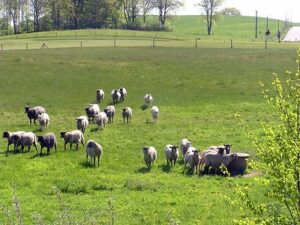
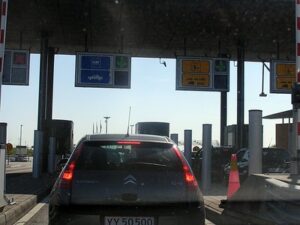
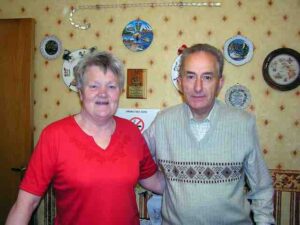
TECHNOLOGY UPDATE
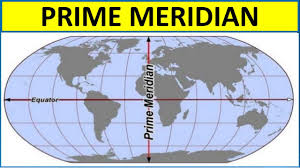
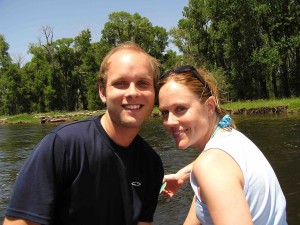
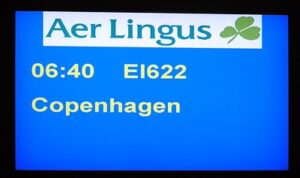
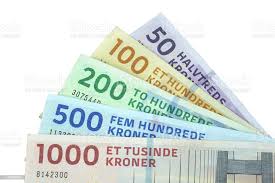
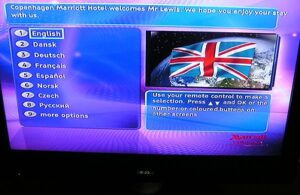
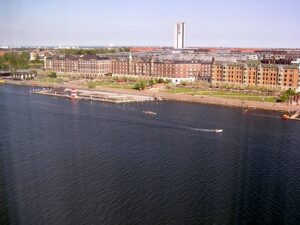
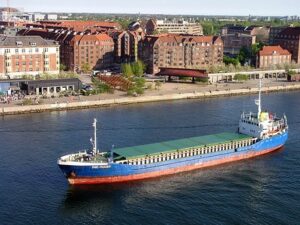

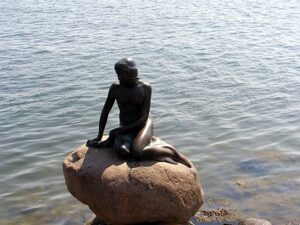
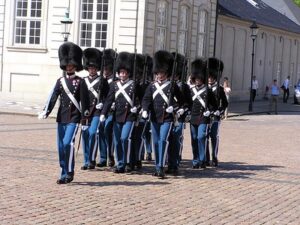
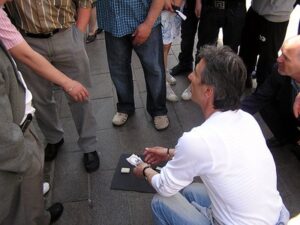
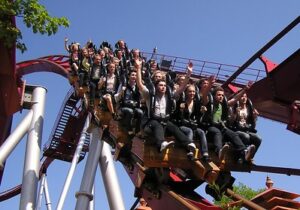
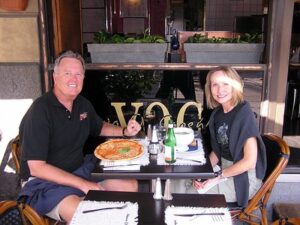


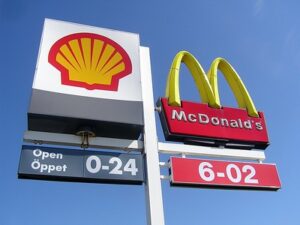
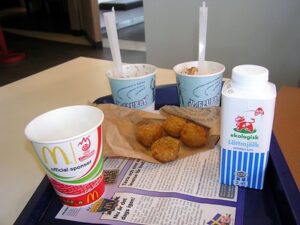
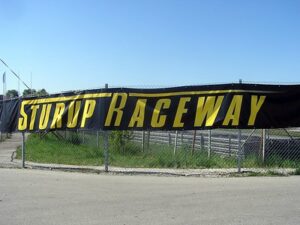
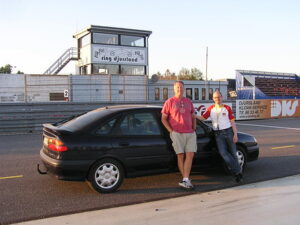
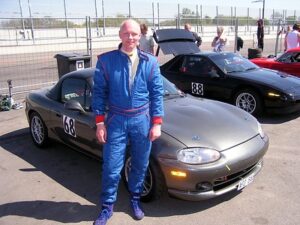
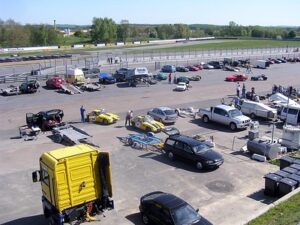
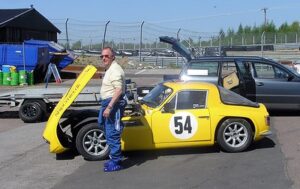
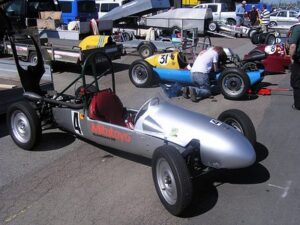
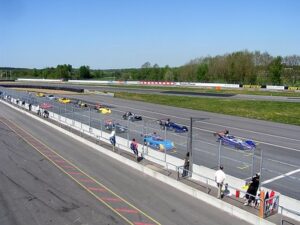
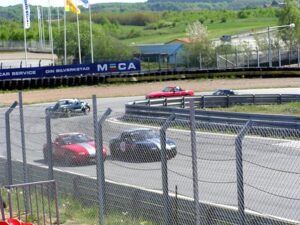

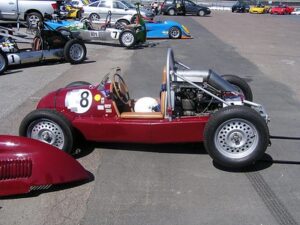
RENTAL CAR
UPCOMING TRACKCHASING PLANS
Sweden – country #15 is in the books. It’s time to make Denmark country #16.
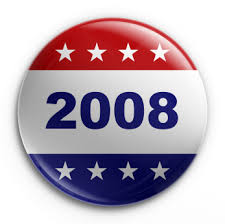
RACETRACKS VISITED IN 2008 (** not the first time to visit this track)
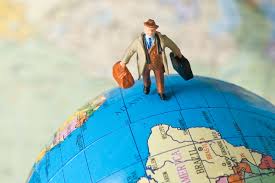
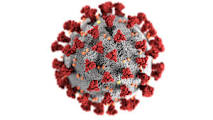
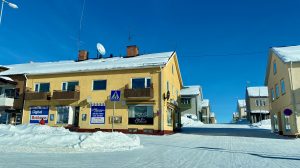

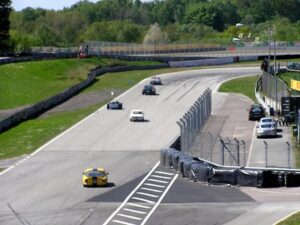
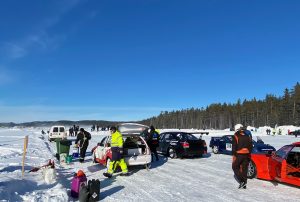
Alaska
Alberta, Canada
Andorra
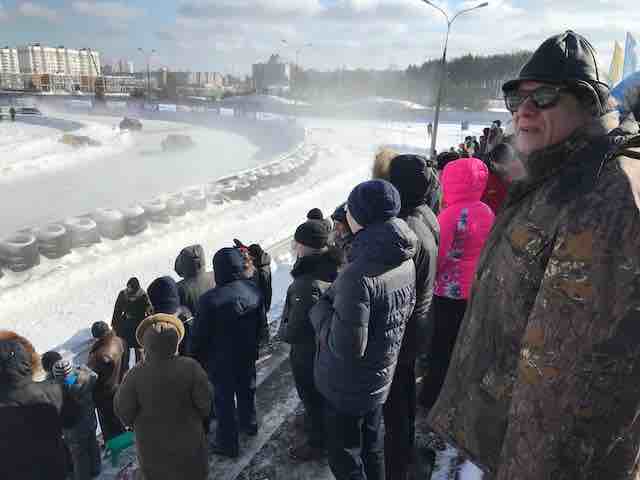
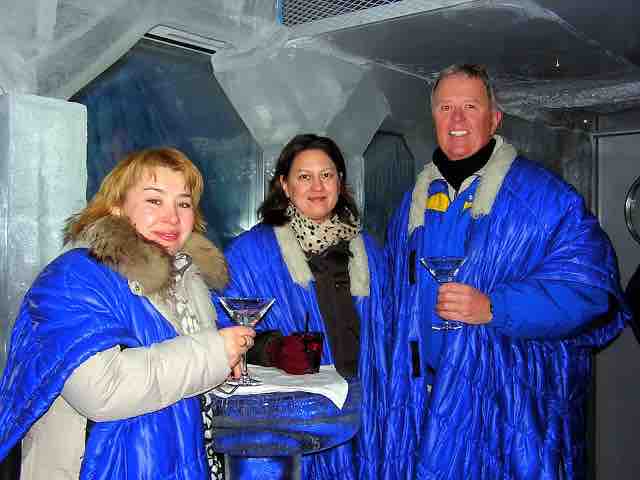
Italy
